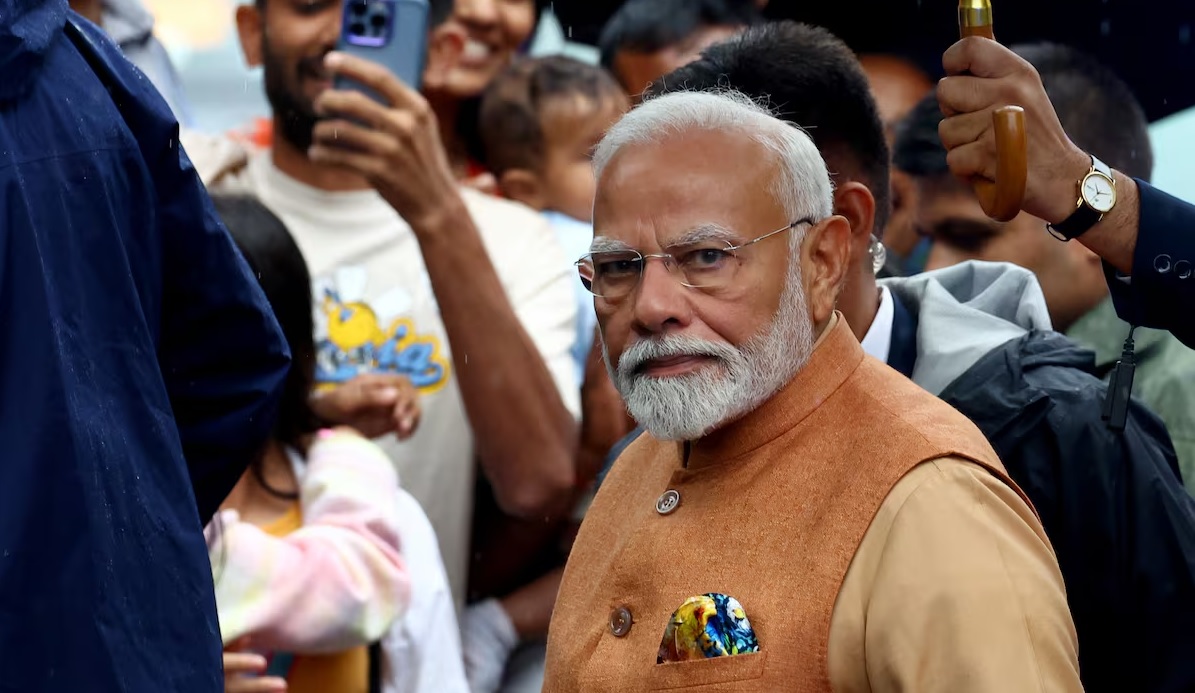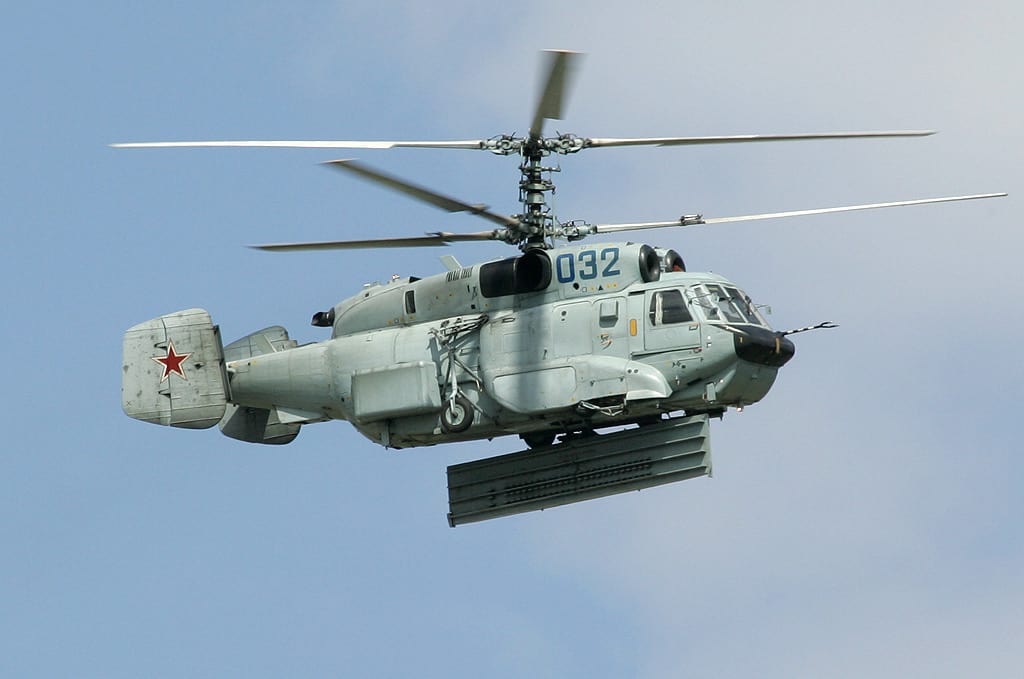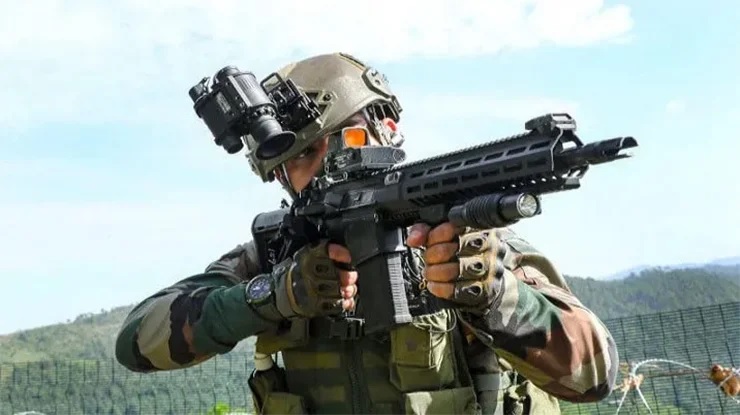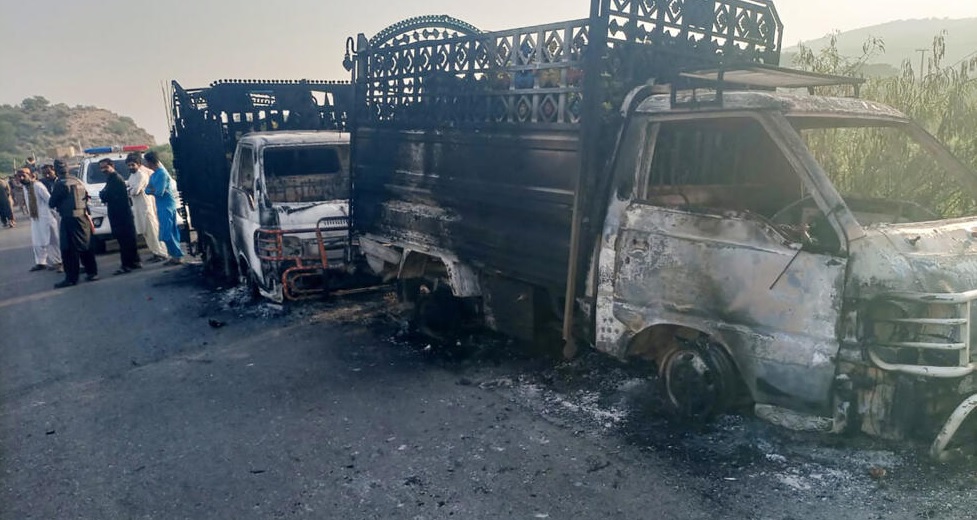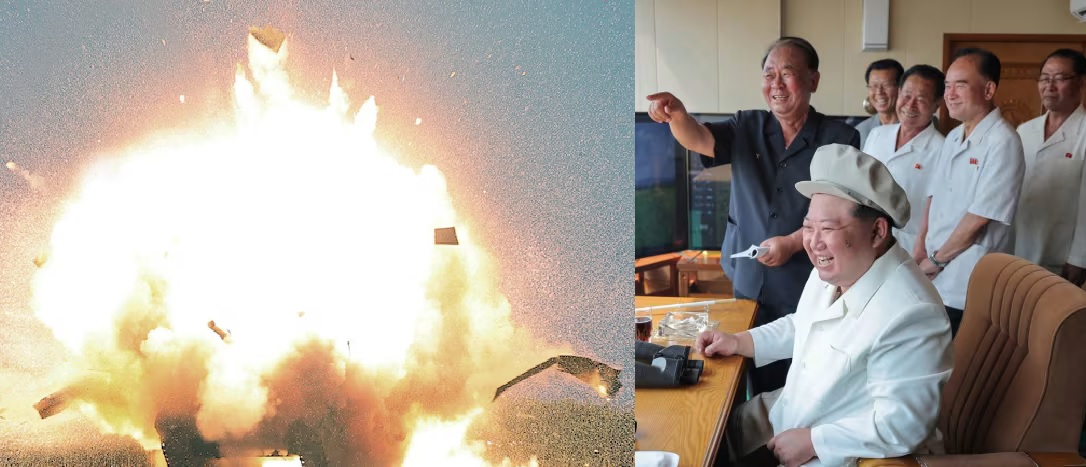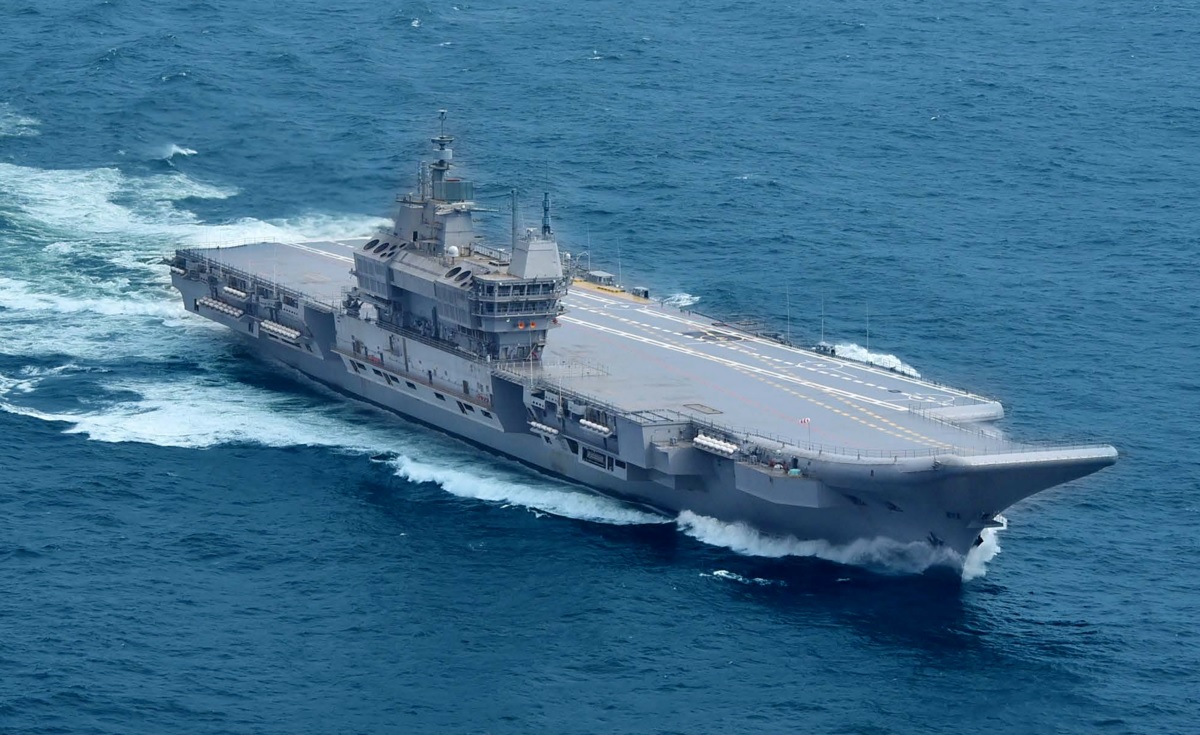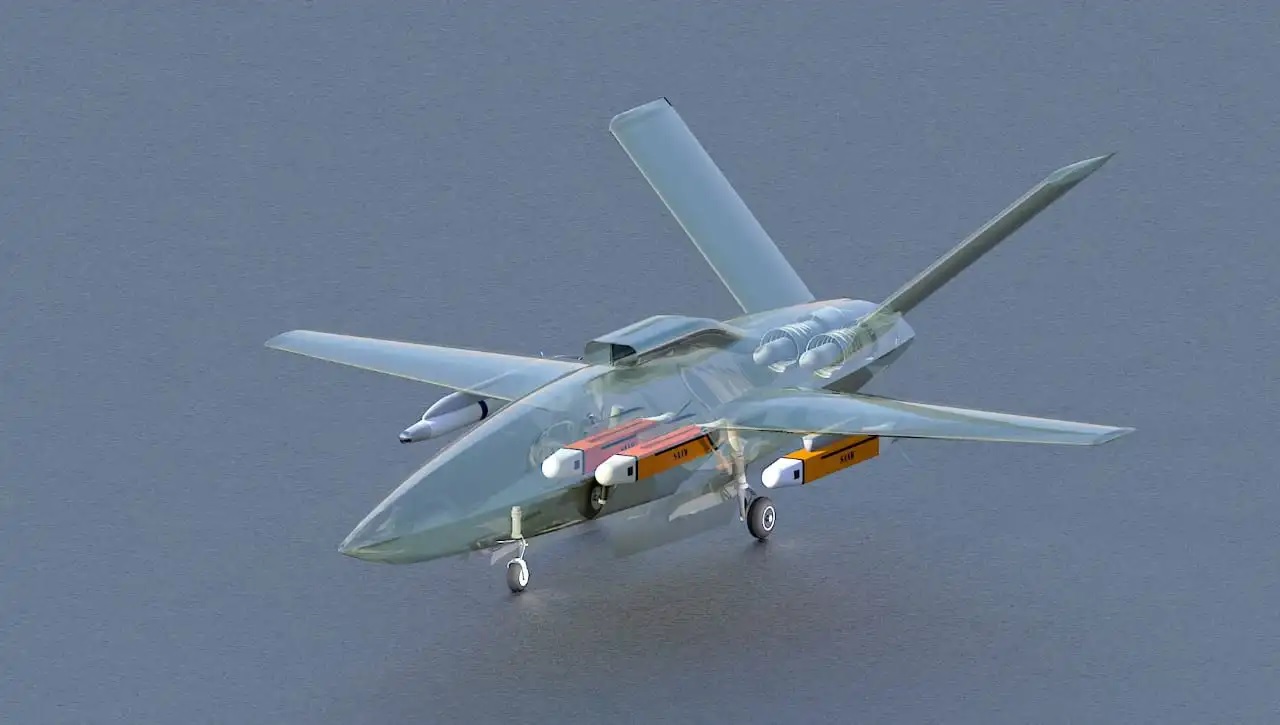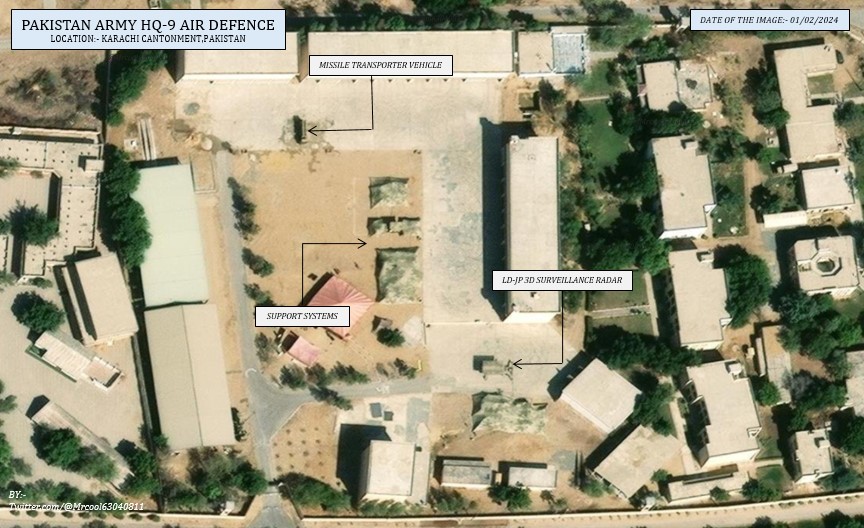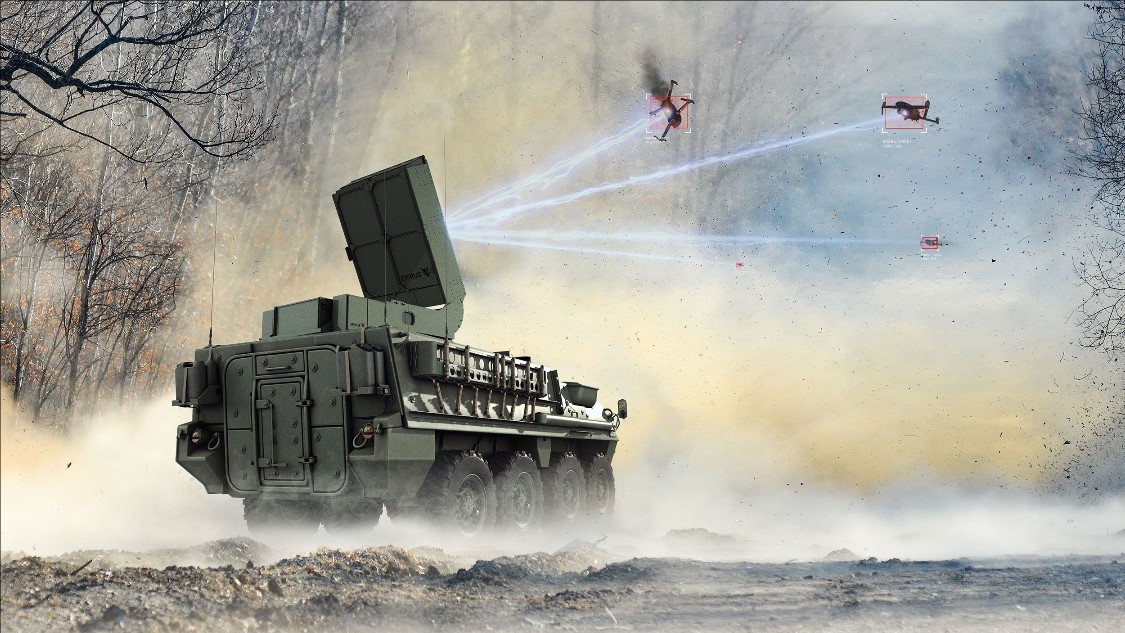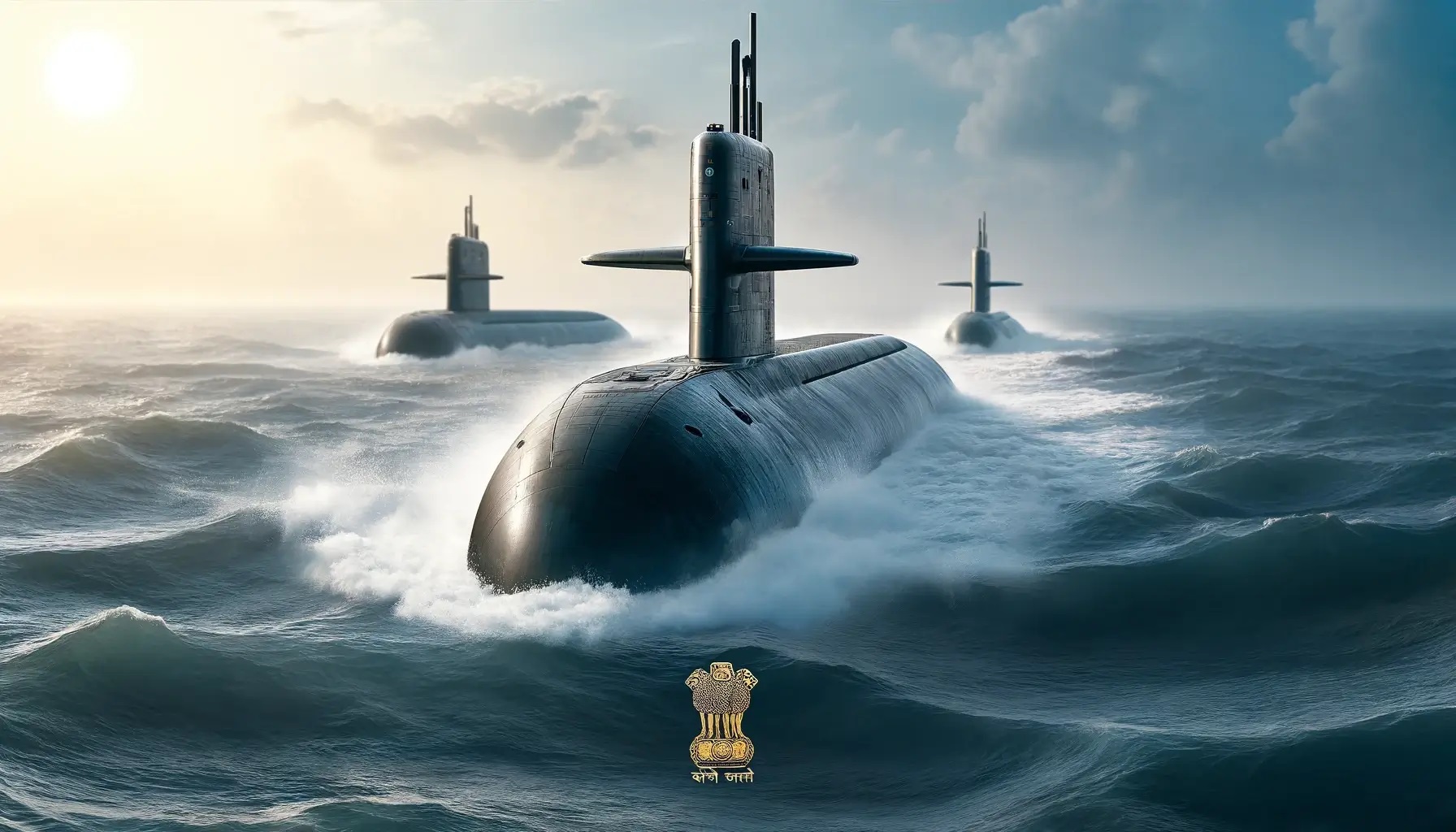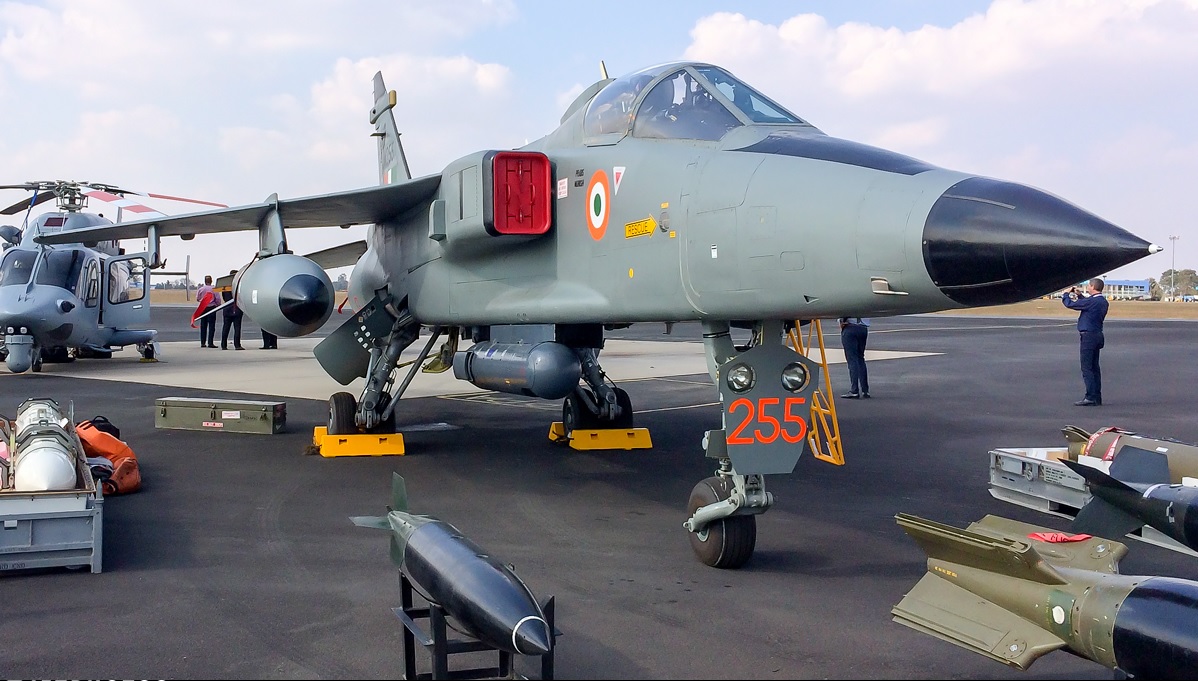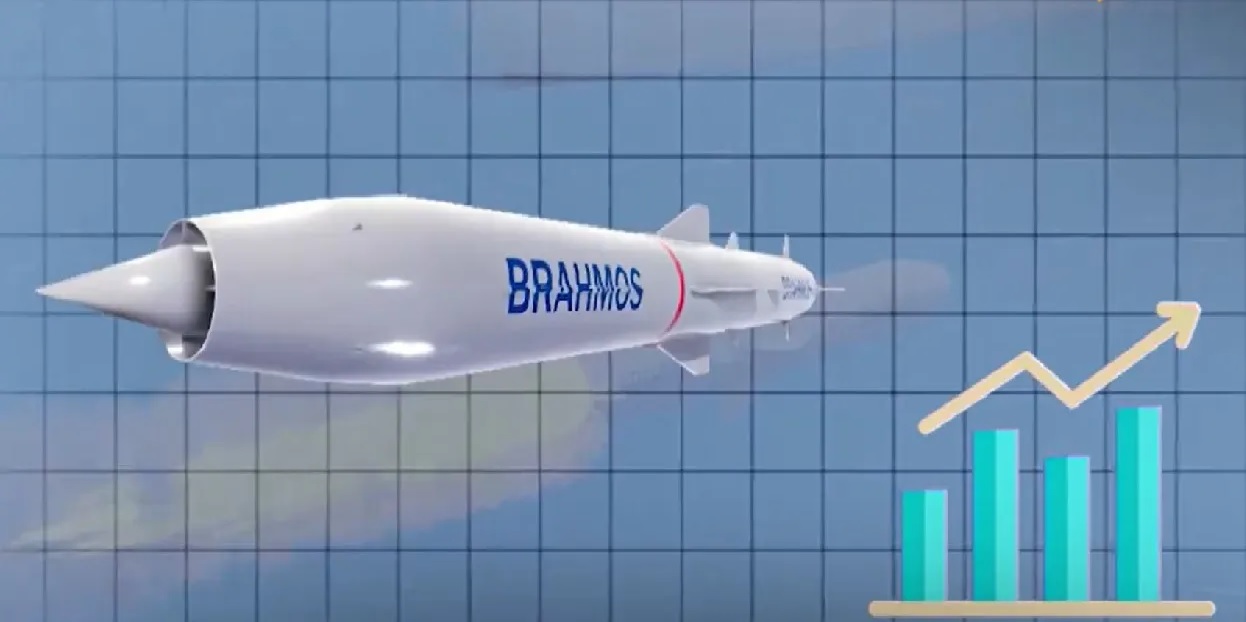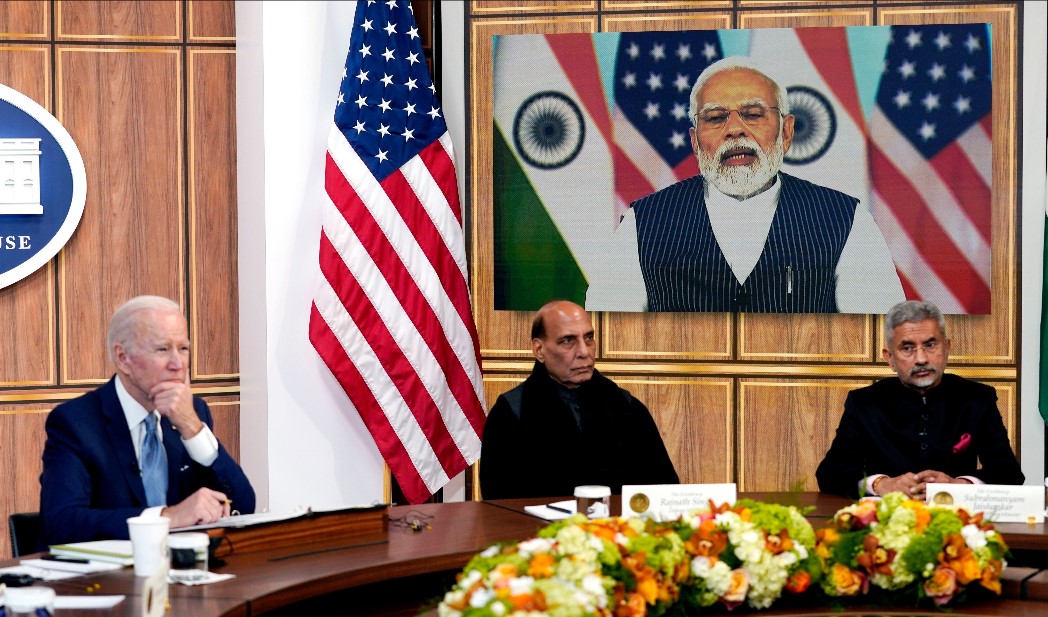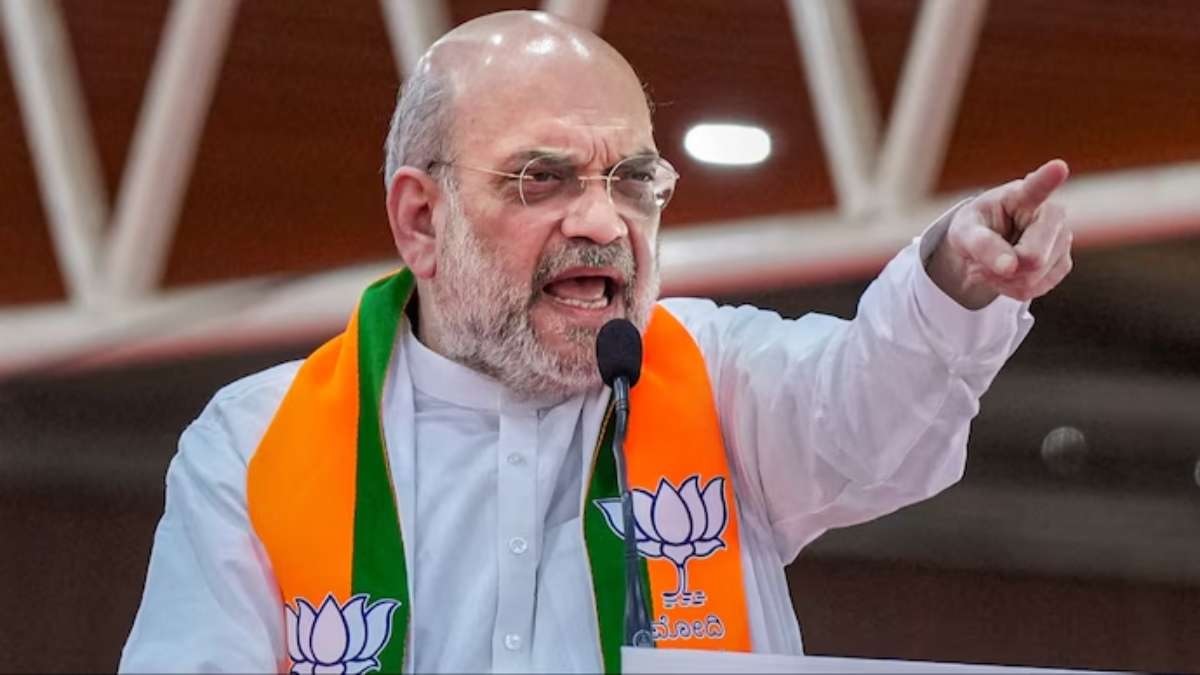India
In a notable diplomatic exchange, Russia and India engaged in discussions about the ongoing Ukraine conflict shortly after Indian Prime Minister Narendra Modi's visit to Kyiv. On August 26, Russian Deputy Foreign Minister Mikhail Galuzin met with Vinay Kumar, India’s Ambassador to Russia, to outline Moscow’s stance on the conflict. According to a statement from the Russian Embassy in India, the conversation took place in a "trusting and constructive atmosphere," with both sides addressing key international and bilateral issues.This diplomatic interaction came just days after PM Modi's historic visit to Ukraine on August 23, the first by an Indian prime minister since India and Ukraine established diplomatic relations in 1992. The visit underscored India's consistent stance of advocating peace and diplomacy as the solution to the ongoing conflict. During his meeting with Ukrainian President Volodymyr Zelenskyy, PM Modi reiterated India's position, emphasizing that India "has never been neutral" and has always been on the side of peace.Modi also conveyed India's readiness to contribute actively to efforts aimed at resolving the conflict, highlighting that dialogue and diplomacy are essential to achieving lasting peace. This message aligns with India’s established approach to global conflicts, where it consistently advocates for negotiation and non-violence over military solutions.The Russia-Ukraine conflict, which began in 2022, has placed India in a delicate diplomatic position, balancing its historical ties with Moscow and its growing global role as a proponent of peace. India’s consistent calls for dialogue have allowed it to engage both Russia and Ukraine, maintaining open channels of communication with both parties.Galuzin’s meeting with the Indian ambassador served as a reminder of Russia’s strategic interest in keeping India informed about its perspective on the conflict. As the statement from the Russian Embassy highlighted, Moscow once again reiterated its "principled position" on the Ukraine issue, reflecting the importance Russia places on aligning with India amidst shifting global dynamics.Prior to this, PM Modi also visited Russia in early August, where he met President Vladimir Putin. During that meeting, Modi emphasized that the path to resolving the Ukraine crisis lies not on the battlefield but at the negotiating table. Both leaders have maintained regular communication throughout the conflict, underscoring the significance of the India-Russia relationship despite the international pressure to take sides.As the conflict drags on, India continues to carve out a unique role, neither fully aligning with Western sanctions against Russia nor ignoring Ukraine’s plight. Instead, it has positioned itself as a mediator, promoting dialogue as the most viable route to ending the war. PM Modi’s recent engagements in both Russia and Ukraine reflect this balancing act, showing India’s determination to play a constructive role in global peace efforts without being swayed by geopolitical pressures.This nuanced approach reflects India’s growing influence on the world stage and its commitment to being a voice of reason and stability in an increasingly polarized world.
Read More → Posted on 2024-08-27 15:41:44India
India’s defense procurement plans have taken a significant hit due to the ongoing conflict between Russia and Ukraine, leading to the cancellation of a crucial deal for acquiring 10 KA-31 Airborne Early Warning and Control (AEW&C) helicopters from Russia. The $520 million deal, intended to bolster the capabilities of India’s newest aircraft carrier, INS Vikrant, has been shelved as geopolitical tensions complicate both financial transactions and the timely delivery of military equipment.The KA-31 helicopters are vital for enhancing the Indian Navy’s early warning capabilities. Designed to detect aerial and surface threats, these helicopters are equipped with advanced radar systems capable of monitoring a 200 km radius. The early warning system is crucial for the defense of naval assets, providing real-time data that allows for a swift response to potential threats. India, which already operates 14 of these helicopters, had planned to add 10 more to its fleet to support INS Vikrant and other warships, ensuring comprehensive maritime security.However, the escalating war in Ukraine has created a host of challenges for the deal. The international sanctions imposed on Russia have severely impacted its defense industry, particularly in terms of financial transactions and supply chain stability. India, which has long depended on Russian military hardware, found itself struggling to navigate the complexities of these sanctions. Efforts to find alternative payment methods or secure exemptions have so far proven unsuccessful.Moreover, there are growing concerns about Russia's capacity to fulfill its defense contracts amidst its military commitments in Ukraine. The strain on Russia’s defense production, combined with the logistical difficulties caused by the war, has cast doubt on its ability to deliver the KA-31 helicopters in a timely manner, if at all. This uncertainty has forced India to reconsider its procurement strategy, leading to the cancellation of the deal.The situation is further complicated by broader concerns over other critical defense systems that India has sourced from Russia. For instance, the delivery schedule of the S-400 Triumf air defense missile systems, a key component of India’s air defense strategy, is also under scrutiny. While India received the first of the five S-400 units in December 2021, the ongoing conflict and sanctions have raised doubts about the timely delivery of subsequent units. Although some training equipment and simulators have arrived, the full deployment of the system remains in question.India’s reliance on Russian military equipment, which constitutes a significant portion of its arsenal, is now under the spotlight. The Ukraine war has underscored the risks of dependency on a single supplier, particularly one that is embroiled in a major international conflict. As a result, India is likely to accelerate its efforts to diversify its defense procurement, looking towards other international partners and boosting its indigenous defense manufacturing capabilities.In summary, the cancellation of the KA-31 helicopter deal marks a significant setback for India’s naval capabilities and highlights the broader challenges faced by the country’s defense procurement strategy in the wake of the Russia-Ukraine conflict. With the future of several key defense projects now uncertain, India is at a critical juncture in redefining its military acquisition policies to ensure that its defense forces remain well-equipped and prepared for emerging threats.
Read More → Posted on 2024-08-27 15:37:33World
In a groundbreaking demonstration, a Cessna 208B utility aircraft recently completed a 3,900-mile (6,276 kilometers) autonomous flight as part of a US Air Force experiment. The operation was a key element of the Agile Flag military exercise, allowing the aircraft to showcase an advanced autonomy system developed by Joby Aviation. This achievement not only marks a significant leap in unmanned aviation but also hints at a future where automated cargo delivery becomes a standard in military operations.The Cessna 208B, a single-engine aircraft widely known for its rugged design and versatility, embarked on this extensive journey across various military installations and public airports in California and Nevada. What made this mission truly remarkable was the aircraft's ability to autonomously taxi, take off, and land at nine different locations, including some it had never visited before. Despite the fully autonomous operation, a safety pilot was on board, monitoring the system, while the entire mission was supervised remotely using just a laptop and a satellite communication terminal small enough to fit into a backpack.This demonstration aligns with the US Air Force’s broader strategy of optimizing its cargo operations. By using autonomous aircraft like the Cessna 208B for smaller, less critical deliveries, the Air Force can reserve its larger cargo planes for missions that demand significant transport capacity, such as moving heavy parts or engines. As Col. Max Bremer from the US Air Force’s Air Mobility Command noted, this approach will enhance overall fleet efficiency, allowing key assets to be allocated more strategically.Joby Aviation’s autonomy system is at the core of this capability. Known for its expertise in electric vertical takeoff and landing (eVTOL) aircraft, Joby adapted its technology for conventional fixed-wing platforms like the Cessna 208B. The system’s ability to manage rapid and long-range cargo resupply was previously tested in January, when the same aircraft autonomously completed a 2,800-mile (4,506 kilometers) mission. This latest demonstration, however, expands both the range and complexity of operations, reinforcing the system’s potential in future military logistics.Maxime Gariel, who leads autonomy efforts at Joby Aviation, highlighted the significance of this milestone, stating, “This successful demonstration shows how our autonomous system can support rapid, long-range resupply missions. We’re excited to continue our partnership with the US Air Force as we refine the technology for even greater automation or full autonomy in diverse operational scenarios.”As the military increasingly looks toward unmanned systems for logistics and supply chain management, the success of the Cessna 208B demo signals a shift towards greater reliance on automation. While the focus currently remains on small-scale cargo operations, the broader implications of this technology could revolutionize how military and even commercial aviation manage transport and resupply in the years to come.
Read More → Posted on 2024-08-27 15:32:25India
SIG SAUER has secured a follow-on procurement contract with the Indian Ministry of Defence (MoD) to supply an additional 73,000 SIG716 rifles, further bolstering the Indian Army's firepower. With this new contract, the total number of SIG716 rifles in service with the Indian Army will reach a substantial 145,400, enhancing the combat capabilities of one of the largest armed forces in the world.The initial deal was inked in 2019 when the MoD ordered 72,400 SIG716 rifles as part of a broader push to modernize the Indian infantry's small arms. The rifles were met with positive feedback from frontline soldiers due to their superior performance, reliability, and rugged design. The success of the initial deployment laid the foundation for this expanded order, solidifying the relationship between SIG SAUER and the Indian defense establishment.The SIG716 rifle is an advanced AR-10 platform chambered in 7.62x51mm NATO. It features a 16-inch chrome-lined barrel that offers enhanced accuracy and range, making it ideal for modern combat scenarios. The rifle is equipped with an M-LOK handguard for better modularity, allowing soldiers to attach accessories such as grips, lights, and lasers. The six-position telescoping stock provides adaptability based on the user's needs, ensuring comfort and stability during operations.One of the standout aspects of the SIG716 is its gas-piston operating system. Unlike direct impingement systems commonly found in standard AR platforms, the piston system in the SIG716 runs cooler and cleaner, reducing the chances of carbon buildup and ensuring more reliable functioning in harsh conditions. Additionally, the rifle is designed to handle the rigors of combat while maintaining accuracy, a key requirement for the Indian Army's high-altitude and diverse terrain deployments.Ron Cohen, President and CEO of SIG SAUER, expressed pride in contributing to the modernization of the Indian Army. "We are honored to continue our partnership with the Indian Ministry of Defence, and this additional procurement underscores the trust they have placed in our SIG716 platform," Cohen stated. He also highlighted the positive feedback received from Indian soldiers regarding the rifle’s performance during live operations.The rifles supplied under this contract will continue to be produced in the United States, following the same high manufacturing standards that have made SIG SAUER a trusted name in the global defense sector. The enhanced AR design, combined with the firepower of a 7.62x51mm cartridge, positions the SIG716 as a formidable choice for the Indian Army’s infantry units, particularly those engaged in counter-insurgency and high-intensity conflict zones.With this expanded acquisition, the Indian Army is taking another significant step toward achieving its long-term modernization goals. The induction of these rifles will provide soldiers with greater lethality, improved accuracy, and better adaptability across varied combat environments.
Read More → Posted on 2024-08-27 15:29:58World
Ukraine has introduced a significant addition to its arsenal with the unveiling of the ‘Palianytsia’ rocket drone—a symbol of resistance and an innovation in long-range warfare. Named after a traditional Ukrainian bread, which also serves as a cultural emblem difficult for Russians to pronounce correctly, the drone has become both a tool of defense and a powerful statement of Ukrainian identity.Developed as a response to Russia's aerial superiority, the Palianytsia rocket drone is a fusion of drone and missile technologies. The Ukrainian military spent a year and a half perfecting this system, prioritizing an effective countermeasure that could bypass conventional air defense systems and strike targets deep inside Russian territory.The drone features a micro-turbojet engine that generates 43 kilograms (95 pounds) of thrust, enabling it to travel long distances with precision. Unlike traditional drones, the Palianytsia is equipped with a 20-kilogram (44-pound) blast fragmentation warhead, a payload capacity comparable to that of an AIM-120 AMRAAM missile. The warhead is designed to maximize damage on impact, making it ideal for targeting critical Russian military installations.In terms of design, the Palianytsia resembles a conventional rocket more than a drone, with a streamlined central body, forward-positioned wings, and a detachable tail section. This aerodynamic structure allows it to maintain stability and speed while flying autonomously to its target. The drone is launched from a ground platform, which adds flexibility in deployment across various terrains.One of the key features of the Palianytsia is its cost-effectiveness. In contrast to other advanced missile systems, this rocket drone is cheaper to produce and operate, allowing Ukraine to deploy it in larger numbers without the financial strain typically associated with high-end weaponry. This efficiency is crucial given the prolonged nature of the conflict and the need for sustainable defense strategies.The drone's first operational strike was announced by President Volodymyr Zelensky during his Independence Day speech on August 24, 2024. He revealed that the Palianytsia had successfully hit a Russian military facility in occupied territory, marking its combat debut. Although details of the strike remain limited, Zelensky emphasized that this new weapon class represents a critical shift in Ukraine's ability to retaliate against Russian aggression, particularly given the hesitance of some international allies to support strikes within Russian borders.Zelensky described the Palianytsia as “an absolutely new class of weapon” and a “new method of retaliating against the aggressor.” The development of this rocket drone underscores Ukraine’s determination to innovate under pressure and address the challenges posed by a technologically superior adversary. As Russia continues its offensive, the introduction of the Palianytsia signals a strategic evolution in how Ukraine plans to defend its sovereignty and push back against occupying forces.The symbolic importance of the name, combined with the advanced capabilities of the drone, highlights how Ukraine is blending cultural identity with technological advancements in its fight for survival. As the conflict continues, the Palianytsia could play a pivotal role in shaping the future of Ukrainian resistance and defense, demonstrating that even in the face of adversity, innovation and resilience can tip the scales in warfare.
Read More → Posted on 2024-08-27 15:25:46India
Balochistan, the troubled southwestern province of Pakistan, has witnessed a devastating surge in violence, with over 100 people reportedly killed in a series of coordinated attacks. The Balochistan Liberation Army (BLA), a separatist militant group, has claimed responsibility for these assaults that primarily targeted security forces, civilians, and transportation routes, deepening the region's already volatile situation.The most significant attack occurred in Bela, a town in Lasbela district, where a convoy traveling on a major highway was ambushed. According to Pakistan's military, the assailants killed 14 soldiers and police officers. The clash, which erupted during the attack, resulted in the deaths of 21 militants. The BLA claimed that they had specifically targeted military personnel dressed in civilian attire, although Pakistan's Interior Ministry maintains that the victims were innocent civilians.In a separate and equally horrifying incident in the Musakhel district, militants reportedly stopped a convoy, checked the identification documents of travelers, and killed at least 23 civilians who were determined to be from Punjab. The attackers also torched 35 vehicles, further intensifying the fear and chaos in the region. The dead and wounded were transported to the nearest hospital in Dera Ghazi Khan, highlighting the desperate situation faced by victims in remote areas where medical facilities are limited.The wave of violence did not end there. In Kalat, a police post was attacked, leading to the deaths of five police officers and five civilians. The attackers also targeted a nearby highway, underscoring their intent to cripple transportation and communication links across the province. Adding to the destruction, blasts were reported on a rail bridge in Bolan, severing rail connections between Quetta and the rest of Pakistan as well as disrupting a critical link to neighboring Iran.As authorities scrambled to restore order, six unidentified bodies were discovered near the Bolan railway bridge, indicating the ferocity of the attacks. Rail traffic to and from Quetta remains suspended, further isolating the provincial capital and complicating efforts to bring relief to affected areas.Balochistan has been a flashpoint for years, with multiple armed groups, including the BLA, pushing for greater autonomy or outright secession. These groups often target laborers from Punjab and other provinces, seeing them as symbols of the central government's control. The BLA, in particular, has frequently warned civilians to avoid highways, threatening deadly consequences for those who ignore their directives.In response to the latest attacks, both provincial and federal authorities have vowed swift retaliation. President Asif Ali Zardari and Interior Minister Mohsin Naqvi condemned the Musakhel massacre as "barbaric," pledging that those responsible would face justice. Balochistan's Chief Minister Sarfraz Bugti echoed these sentiments, promising a crackdown on the perpetrators. Meanwhile, Uzma Bukhari, a spokesperson for the Punjab government, urged the Balochistan administration to intensify efforts against the BLA, emphasizing the urgent need to protect civilians.Local media reported that security forces have killed 12 suspected rebels in operations across Balochistan over the past 24 hours. These efforts, however, appear insufficient in curbing the persistent insurgency. Previous BLA-led attacks, such as the killings of seven barbers in Gwadar in May and the abduction and murder of travelers in April, illustrate the group’s capacity for sustained violence.Balochistan’s conflict is deeply rooted in the province’s resource wealth, which starkly contrasts with the poverty experienced by its population. The region’s natural gas and mineral reserves have long been a point of contention, with armed groups accusing the central government of exploiting these resources while neglecting local development. This tension has fueled a deadly cycle of violence that shows no signs of abating, as separatists continue to escalate their campaign for independence.
Read More → Posted on 2024-08-27 15:21:29World
North Korean leader Kim Jong Un recently supervised tests of the country’s latest development in unmanned aerial technology: "suicide drones." During a visit to the Drone Institute of North Korea’s Academy of Defence Sciences, Kim observed the drones in action, watching as they successfully targeted and destroyed mock enemy tanks and other targets. The tests demonstrated the drones’ capability to follow preset flight paths and accurately strike designated objectives.Kim Jong Un’s emphasis was on advancing the technology further, particularly in integrating artificial intelligence into these drones. His call for innovation highlights a push towards producing more sophisticated loitering munitions. These weapons, known as suicide drones, are designed to loiter over a battlefield until a target is detected, after which they dive and detonate on impact. Such technology has gained prominence in recent conflicts, notably in Ukraine and the Middle East.State media released photos showcasing at least four different types of North Korean suicide drones. Some of these drones were equipped with small rocket engines for launch, transitioning to propeller-driven flight once airborne. The images revealed various designs, hinting at advanced development and diversification of drone capabilities.The similarities between North Korean drones and those used by Russia and Iran, such as the ZALA Lancet and Iranian-designed Shahed, have drawn attention. South Korea’s Joint Chiefs of Staff have noted these similarities and suggested that further analysis is needed to determine the extent of any technological exchanges or improvements influenced by collaborations with Russia and Iran. North Korea's military ties with Russia and Iran are well-documented, with a history of arms cooperation. The recent unveiling of these drones marks the first public demonstration of such technology by Pyongyang. This development comes against a backdrop of heightened regional tension, including a recent incident where North Korean drones breached South Korean airspace.In response, South Korea is accelerating its defense measures. The country plans to deploy laser weapons capable of intercepting and destroying incoming drones, marking it as a pioneering move in anti-drone technology. Additionally, anti-aircraft systems are being installed on rooftops of high-rise buildings in Seoul to bolster defenses.As North Korea and the U.S. continue their military activities, including joint exercises focused on countering drone threats, the implications of these new drone capabilities are closely watched. The evolving situation underscores the increasing role of advanced unmanned systems in modern warfare.
Read More → Posted on 2024-08-26 16:01:51World
In a significant escalation, Russian forces launched one of their largest coordinated assaults on Ukraine, bombarding cities across the country with more than 100 missiles and approximately 100 attack drones. Ukrainian President Volodymyr Zelensky described the attack in a video message, highlighting the scale of the onslaught. "It was one of the largest strikes—a combined one," Zelensky said, specifying that various types of missiles and Iranian-made Shahed drones were deployed in the early Monday morning attack.The assault, which struck multiple Ukrainian cities including Kyiv, Kharkiv, Odesa, and Vinnytsia, triggered air raid sirens nationwide just before dawn. Residents in the capital city of Kyiv woke up to explosions and subsequent power outages. Mayor Vitali Klitschko reported that several districts were left without electricity, while the right bank of the city experienced water supply issues. The attack also hit residential areas, including an apartment block in Lutsk, resulting in the death of one person, according to local authorities.The Ukrainian Air Force initially detected 11 Russian bomber aircraft in action, alongside numerous kamikaze drones targeting Ukrainian cities. Shortly afterward, another six bombers were reported in the air, launching waves of missiles. The Ukrainian defense systems responded, but the intensity and scale of the assault underscored the evolving nature of the conflict, with Russia increasing the tempo of such large-scale coordinated attacks.Cities far beyond the front lines, like Dnipro, Zaporizhzhia, and Kryvyi Rih, also experienced explosions, demonstrating the wide reach of Russia’s latest offensive. The mayor of Kharkiv, Ihor Terekhov, confirmed explosions in the city, further amplifying fears among civilians. In a separate incident, in the eastern Donetsk region, a hotel in Kramatorsk was struck overnight by a Russian missile, wounding two journalists and leaving a third missing. The journalists were identified as British, American, and Ukrainian nationals.On the other side of the border, the conflict’s reach has also expanded into Russian territory. In the Belgorod region, a Ukrainian strike killed five people and injured 13, including three minors, according to Regional Governor Vyacheslav Gladkov. The attack targeted the settlement of Rakitnoye, reflecting Kyiv’s intensified strategy of launching strikes inside Russian territory, a tactic that has become more frequent since Ukraine’s surprise ground offensive in Russia’s Kursk region two weeks ago.As Ukraine braces for further escalations, the ramifications of this major attack remain uncertain. Zelensky’s address hinted at a resolve to withstand these continuous waves of assault, as Ukraine continues to fight back against Russia’s multi-pronged strategy that blends missile strikes, drone swarms, and incursions into Ukrainian territory. While the situation remains fluid, the scale of this attack signals a significant development in the ongoing conflict, with broader implications for the region and the international community.
Read More → Posted on 2024-08-26 15:58:37India
The Border Security Force (BSF) recently reiterated that the 443-km India-Bangladesh border in Meghalaya is fully secure amidst swirling rumors of illegal crossings by Bangladeshi nationals. This statement comes after reports emerged in Bangladeshi media about an Awami League leader, Ishak Ali Khan Panna, allegedly dying while attempting to flee his country by crossing into India via Dawki in Meghalaya's East Khasi Hills. Dawki, known for its scenic beauty and strategic location near the international border, has become the center of speculation, but the BSF has firmly denied any such incidents.According to a BSF spokesperson, "There is no illegal entry of Bangladesh nationals in the area of responsibility of the Meghalaya Frontier BSF along the Indo-Bangla border. The story of Panna’s death being circulated is entirely fabricated. Any attempt at illegal infiltration or activities that compromise the security of our nation will be dealt with firmly." This statement comes amid heightened vigilance following recent unrest in Bangladesh, where the BSF has successfully thwarted multiple illegal entry attempts.The BSF, which is tasked with guarding this highly sensitive border region, has emphasized that the claims of Panna’s death near the border are baseless. Their statement was further corroborated by local sources in Dawki who denied any knowledge of such an incident. An elder from Dawki expressed that if any Bangladeshi had indeed tried to cross into India, local villagers would have immediately informed the BSF and local authorities. “There is no such incident,” the elder said, while adding that local communities play an active role in cooperating with the BSF to prevent any illegal activities along the border.The BSF has even reached out to the Assistant High Commission of Bangladesh in Assam for further clarity on the matter. Interestingly, the Assistant High Commission has confirmed that they have received no official information from their government regarding Panna's alleged death near the border. Additionally, a source close to the border shared that Panna's death, if true, occurred well within Bangladeshi territory, around 400 meters away from the international border. The same source suggested that Panna was attacked while traveling near the border, not during any illegal attempt to cross into India.This incident, coupled with previous instances of fabricated stories, highlights the ongoing challenges faced by border forces in combating misinformation while maintaining the sanctity and security of the India-Bangladesh border. The BSF’s continued efforts to enhance surveillance, engage with local communities, and cooperate with Bangladeshi authorities ensure that the border remains secure despite attempts to create confusion or disrupt peace.With over 443 kilometers of tough terrain and diverse challenges, the Meghalaya frontier has been a focal point of BSF operations. The force’s latest response reaffirms their commitment to securing this crucial stretch of the border while maintaining close cooperation with local communities and ensuring a balanced relationship with Bangladesh.
Read More → Posted on 2024-08-26 15:55:13India
India has set its sights on leading the next industrial revolution with the launch of its BioE3 (Bio-Economy, Environment, and Employment) policy, a forward-looking initiative aimed at revolutionizing biomanufacturing while addressing pressing global challenges such as climate change, food security, and energy needs. Approved by the Union Cabinet, this policy marks a critical shift in India’s industrial landscape, positioning the country as a key player in the rapidly growing bioeconomy.The BioE3 policy focuses on high-performance biomanufacturing, an emerging field that integrates advanced biotechnology with manufacturing processes to produce a wide range of products—from biopharmaceuticals to biodegradable materials. By fostering innovation and entrepreneurship, India aims to unlock new solutions in agriculture, healthcare, energy, and environmental sustainability.At the core of this policy is the ambition to lead the next wave of industrialization through the use of biological sources and processes. Historically, India lagged behind in earlier technological revolutions, such as the semiconductor boom, which arrived decades later. However, with the BioE3 policy, India is determined not to miss this opportunity to be at the forefront of the biomanufacturing sector, which is expected to be pivotal in the coming decades.Union Finance Minister Nirmala Sitharaman laid the foundation for this shift by announcing plans to support biomanufacturing and bio-foundry initiatives in her Interim Budget. These initiatives include the development of environmentally friendly alternatives like biodegradable polymers, bioplastics, biopharmaceuticals, and bio-agricultural inputs—key components in addressing global environmental challenges.According to Rajesh Gokhale, Secretary of the Department of Biotechnology, biomanufacturing will be instrumental in meeting the rising demands for food and fuel while creating new employment opportunities. Speaking at a recent media briefing, Gokhale emphasized that the world has seen multiple industrial revolutions—fueled by steam power, electricity, oil, and information technology—each reshaping economies and societies. The next revolution, he noted, will be driven by biology, making India’s BioE3 policy crucial for the nation’s goal of becoming a developed country by 2047.Gokhale further highlighted that biomanufacturing offers innovative solutions to pressing issues like resource depletion, waste management, and pollution. The development of biotextiles, bioplastics, and other sustainable materials can significantly reduce environmental footprints. Enzymes and microbial strains, key elements in biomanufacturing, are already being developed by global leaders like Novazyme and supported by Indian research institutions, including the International Centre for Genetic Engineering and Biotechnology in Delhi and the National Agri-Food Biotechnology Institute in Mohali.One of the policy’s long-term objectives is to reduce India’s dependency on crude oil imports, which currently account for nearly three-quarters of the country’s oil needs. By leveraging biomass, plastic waste, and carbon dioxide, the policy envisions replacing a significant portion of fossil fuels with bio-based alternatives over the next two decades. This ambitious goal will require not only technological advancements but also scaling up production capabilities to meet national and global demands.The BioE3 policy also aims to address challenges in the agriculture sector. India, as the world’s largest producer of milk, faces sustainability issues as the population grows and the demand for dairy increases. Traditional methods of boosting production, such as expanding cattle numbers, are no longer viable due to land and water constraints, rising feed costs, and environmental concerns like greenhouse gas emissions and antibiotic resistance. Biomanufacturing can offer solutions through the development of non-dairy milk alternatives, ensuring food security without exacerbating resource strain.The policy also highlights innovative projects already underway in India. For instance, an Indian steel company is collaborating with researchers to integrate algal farms into its operations. These farms can capture carbon dioxide directly from exhaust gases, turning a waste product into a resource that supports sustainable manufacturing.With the BioE3 policy, India is not only aiming to position itself as a global leader in biomanufacturing but also seeking to address critical environmental and economic challenges. By embracing the industrialization of biology, India hopes to create a future that is sustainable, innovative, and resilient in the face of global uncertainties.
Read More → Posted on 2024-08-26 15:52:55India
Cochin Shipyard Limited (CSL), fresh off the success of delivering India’s first indigenous aircraft carrier, INS Vikrant, has laid out an ambitious plan to build a second carrier in a much shorter timeframe. This proposal to the Indian Navy outlines a construction period of just seven years, a significant reduction compared to the 13 years it took to bring INS Vikrant from keel-laying to sea trials. CSL’s confidence in achieving this accelerated schedule is rooted in the lessons learned and infrastructure developed during the construction of INS Vikrant, which now serve as a solid foundation for the new project.The experience gained from building INS Vikrant has been transformative for CSL. The shipyard has not only honed its technical expertise but also established a robust industrial ecosystem capable of supporting large-scale naval projects. This ecosystem includes a highly skilled workforce, advanced manufacturing facilities, and a network of suppliers and subcontractors that have already been through the rigorous process of constructing an aircraft carrier. CSL plans to leverage these resources to streamline the construction of the next carrier, reducing both time and cost.One of the key factors CSL emphasizes is the importance of timely and consistent funding. During INS Vikrant’s construction, delays in funding often led to slowdowns and increased costs. By securing a steady flow of resources from the outset, CSL believes it can maintain a continuous construction schedule, aiming to reach 85% completion by the sixth year. This level of progress would position the shipyard to deliver the carrier within the promised seven-year period, a feat that would mark a significant achievement in India’s naval capabilities.While the core design of the new carrier is expected to remain largely similar to that of INS Vikrant, there are discussions about potential enhancements. One area under consideration is the size and capacity of the aircraft lifts. The new carrier could feature larger lifts capable of handling heavier and larger aircraft, including next-generation fighters and unmanned aerial vehicles (UAVs). As India advances in the development of Medium-Altitude, Long-Endurance (MALE) and High-Altitude, Long-Endurance (HALE) UAVs, the carrier could be equipped to operate these platforms, further expanding its operational capabilities.The strategic significance of this proposal cannot be overstated. A second indigenous aircraft carrier would greatly enhance the Indian Navy’s power projection in the Indian Ocean Region, a crucial area for maintaining maritime security and regional stability. Moreover, the successful completion of such a project would underscore India’s growing prowess in indigenous warship construction, reducing dependence on foreign technology and bolstering national security.Cochin Shipyard’s bold vision for building India’s second indigenous aircraft carrier within seven years is a testament to the progress the nation has made in naval engineering and shipbuilding. If realized, this project would not only reinforce India’s maritime defense but also symbolize the country’s emergence as a major player in global naval capabilities.
Read More → Posted on 2024-08-26 15:50:08India
Hindustan Aeronautics Limited (HAL) is taking significant strides in advancing India’s unmanned aerial combat capabilities. Building on the success of its earlier initiatives, the aerospace giant is now focused on the development of a high-altitude, long-endurance (HALE) combat drone, the CATS Warrior II. This 5-ton unmanned combat aerial vehicle (UCAV) represents a leap forward in India’s indigenous drone technology, designed to meet the country’s evolving defense needs.The CATS Warrior II is a step up from HAL’s previous CATS Warrior "loyal wingman" concept. While that design was focused on supporting manned fighter jets, this new iteration is an autonomous, fully independent combat drone with significantly enhanced features. With a payload capacity of 400 to 500 kg, the CATS Warrior II is optimized for high-altitude missions, making it capable of engaging targets from nearly 35,000 feet in the sky.A key aspect of this UCAV is its endurance. Designed for extended missions, the drone is expected to have a flight endurance exceeding 10 hours, making it suitable for long surveillance, reconnaissance, and strike missions. This endurance is supported by the Hindustan Turbo Fan Engine (HTFE-25), a domestically produced powerplant that HAL is concurrently developing. The HTFE-25 is expected to be certified by 2027, aligning with the anticipated timeline for the CATS Warrior II’s deployment. However, recognizing the long certification process, HAL is also considering integrating the Russian AL-55I engine as an interim solution to accelerate testing and operational deployment.The CATS Warrior II is not just about raw power and endurance; it’s a sophisticated platform that bridges the gap between India’s existing tactical drones and more strategic UCAVs like the Ghatak. By fitting in this middle range, it adds flexibility to India’s air combat capabilities. The drone is expected to carry a variety of munitions, including precision-guided bombs and air-to-ground missiles, enhancing its effectiveness in both offensive and defensive roles.HAL’s vision for this UCAV aligns with India’s broader goal of achieving self-reliance in defense technologies. The CATS Warrior II will likely be integrated with cutting-edge avionics, advanced sensors, and networked communication systems to ensure seamless operations within a larger combat ecosystem. Given its potential applications in both conventional and asymmetric warfare, this drone could be a pivotal addition to India’s aerial fleet.The CATS Warrior II also underscores HAL’s commitment to developing homegrown defense solutions, reducing dependence on foreign technologies while meeting the increasingly complex security demands of the region. Positioned below the Ghatak UCAV program, the CATS Warrior II is designed to provide a versatile and reliable option for a range of missions, from border patrols to deep-strike operations.As the design phase progresses, HAL’s work on this UCAV will be closely watched, especially given the strategic importance of high-endurance drones in modern warfare. The successful development and deployment of the CATS Warrior II could mark a significant milestone in India’s journey toward a more autonomous and self-sufficient defense capability.
Read More → Posted on 2024-08-26 15:42:44World
The Pakistan Army has strategically enhanced its air defense network by deploying the Chinese-made HQ-9 air defense system at the Karachi Cantonment. Recent satellite imagery has confirmed the presence of this advanced missile system, which signals a significant upgrade in Pakistan’s ability to protect key economic and military assets. Given Karachi’s status as a vital commercial hub and its proximity to the Arabian Sea, the move underscores Pakistan’s intention to secure its most critical infrastructure against evolving aerial threats.The HQ-9 is a versatile high-to-medium altitude air defense system, boasting a range of approximately 125 kilometers. It offers comprehensive protection by detecting, tracking, and intercepting aerial threats like enemy aircraft, cruise missiles, and other high-speed airborne targets. With its ability to engage multiple targets simultaneously, the HQ-9 adds a new layer of robustness to Pakistan’s defense posture. The deployment in Karachi is particularly significant, as it shields one of the country’s busiest cities, its seaports, and other strategic installations from potential air strikes or drone incursions.Inducted into the Pakistan Army in 2021, the HQ-9 system is part of Pakistan's broader strategy to counter regional challenges, especially given the shifting dynamics in South Asia. Its deployment at Karachi Cantonment reflects the country’s proactive stance on securing its airspace. The system's long-range engagement capability allows early detection and interception, minimizing the risk of damage to vital assets. In modern warfare, where the speed and accuracy of missile systems can dictate the outcome of conflicts, the HQ-9 gives Pakistan a decisive edge in defending its key territories.The HQ-9 is modeled after Russia’s S-300 system but incorporates Chinese innovations, making it a formidable platform with a highly automated command-and-control system. It can guide missiles toward targets at various altitudes, ensuring comprehensive air coverage. The deployment of this advanced air defense system at Karachi’s cantonment is more than just a defensive move; it also serves as a signal to regional adversaries that Pakistan is prepared to respond to any potential threats with advanced, reliable systems.Pakistan’s decision to position the HQ-9 at this critical location is indicative of its long-term defense objectives. As Karachi remains a focal point for economic activity and military operations, this move reinforces the importance of air superiority and protection in safeguarding national interests.
Read More → Posted on 2024-08-26 15:40:12India
The Indian Army is ramping up its defenses against the increasingly sophisticated threat posed by unmanned aerial systems (UAS), including swarms of drones. To bolster its capabilities, the Army has issued a Request for Information (RFI) for the procurement of 45 Anti-UAS High Power Microwave Mark-II (AUHPM Mk-II) systems. These advanced systems are designed to neutralize both individual UAVs and large drone swarms, reflecting the Army’s proactive approach to emerging security challenges.The Rising Threat of UAVs and Swarm DronesThe threat from UAVs and drone swarms has escalated globally, with recent conflicts in the Middle East and Ukraine showcasing the destructive potential of these aerial systems. UAVs have evolved from simple reconnaissance tools to sophisticated weapons capable of carrying out precision strikes. This evolution has made them a significant threat on the modern battlefield, requiring advanced countermeasures.AUHPM Mk-II: A Dual-Mode Defense SystemThe AUHPM Mk-II systems that the Indian Army is looking to procure are equipped with cutting-edge technology to effectively counter UAV threats. These systems combine advanced surveillance, detection, and tracking capabilities with a powerful High Power Microwave (HPM) weapon system. The HPM system can execute both "hard kill" and "soft kill" operations, making it a versatile tool in the Army’s arsenal.Hard Kill : This involves the physical destruction of the target, typically through the directed emission of high-power microwave pulses that can fry the electronic circuits of the UAV, rendering it inoperable.Soft Kill : In contrast, this approach disrupts the UAV’s operations without destroying it. This could involve jamming the communication links between the UAV and its operator or spoofing its navigation systems, causing it to veer off course.The AUHPM Mk-II’s microprocessor-based targeting system ensures precise engagement, which is crucial when dealing with small, fast-moving drones.Emphasis on Indigenous TechnologyA notable aspect of the RFI is the Indian Army's preference for systems with at least 50% indigenous content. This aligns with India's broader push towards self-reliance in defense technology, known as "Atmanirbhar Bharat." By encouraging the development and procurement of homegrown technologies, the Army aims to reduce dependency on foreign systems and foster innovation within the country’s defense sector.Addressing the Unique Challenges of UAVsCountering UAVs presents unique challenges, especially with the rise of smaller, more agile drones that are harder to detect and engage. Traditional air defense systems, designed to counter larger aircraft, often struggle with these smaller targets. The AUHPM Mk-II systems are designed to fill this gap by providing both the range and precision needed to neutralize these threats.The RFI outlines the requirement for these systems to have a minimum effective range of 5 kilometers, ensuring they can operate effectively in diverse environments, from the high altitudes of the Himalayas to the coastal regions and deserts of India. This versatility is crucial given the varied terrains in which the Indian Army operates.Future of Counter-UAV Operations in IndiaWhile India already possesses some counter-UAV capabilities, the issuance of this RFI signals a significant step forward in modernizing and enhancing its defenses. The Army is keen on integrating hybrid systems that combine both soft and hard kill solutions, providing a comprehensive defense against the evolving capabilities of modern drones. Additionally, there is a focus on developing a Common Air Defence Tracked Platform (CADET), which would offer a more unified and flexible approach to air defense.As the threat from UAVs continues to grow, the Indian Army’s proactive efforts to acquire and deploy advanced countermeasures like the AUHPM Mk-II systems will be crucial in maintaining the security and operational effectiveness of its forces.
Read More → Posted on 2024-08-26 15:10:35India
India is poised to make a significant leap in quantum technology with the imminent launch of its first quantum computer under the National Quantum Mission (NQM). This milestone comes after nearly four years of planning and preparation, as the country intensifies efforts to position itself as a global leader in quantum computing and related technologies.The National Quantum Mission: A Strategic VisionThe National Quantum Mission, with a substantial ₹6,000 crore corpus, is set to drive India's ambitions in quantum technology. Ajai Chowdhry, Co-founder of HCL and Chairman of the Mission Governing Board, has outlined a comprehensive blueprint to allocate these funds effectively. The mission aims to foster innovation and development across four key verticals: quantum computing, communication, measurement, and sensing.To achieve these goals, the mission will establish four Section 8 companies, each dedicated to one of these verticals. These companies will operate under the aegis of premier Indian institutions such as the Indian Institutes of Technology (IITs) and the Indian Institute of Science (IISc). "The institutes have been shortlisted, and announcements will be made soon," Chowdhry revealed in an interview. Launching India's First Quantum ComputerOne of the most anticipated developments under the NQM is the launch of India's first quantum computer, which will achieve a computation capability of 6 qubits. This milestone is expected to be reached within the next few months, marking a significant advancement in India's quantum capabilities. The project is being spearheaded by a consortium of leading institutions, including the Tata Institute of Fundamental Research (TIFR), under the "Quest" program, a precursor to the NQM.Chowdhry emphasized that the mission's long-term goal is to establish a quantum computer with a computational power of 20-50 qubits within the next three years, scaling up to 50-100 qubits in five years and 50-1000 qubits in the next decade. These targets align with global standards, as quantum computers currently operational in other countries typically have processing capabilities in the 20-50 qubit range.Strategic Importance and National SecurityThe development of indigenous quantum computing capabilities is not just a technological milestone but also a strategic imperative for India. Chowdhry highlighted the potential national security implications, particularly in the context of China's significant investments in quantum computing. "China's advancements in quantum technology pose a real threat, especially if they target critical infrastructure in India, such as our electrical grids or financial systems," Chowdhry warned. He stressed the importance of having homegrown quantum computing capabilities to mitigate such risks.Supporting Quantum Start-ups and InnovationIn addition to the launch of the quantum computer, the NQM is also focused on nurturing an ecosystem of quantum technology start-ups. To this end, the mission plans to establish India's most comprehensive grant program for deep tech start-ups, offering grants ranging from ₹10-25 crore. This initiative is a departure from the traditional ₹10-50 lakh grants typically provided by the government and is designed to meet the significant capital requirements of quantum technology ventures.Chowdhry pointed out that India already has a nascent ecosystem of 4-5 start-ups developing commercial quantum communication products for the defense sector and other industries. The NQM aims to further bolster this ecosystem by providing the necessary financial support and infrastructure to accelerate the development and deployment of cutting-edge quantum technologies.Looking Ahead: A Quantum Future for IndiaAs the National Quantum Mission gathers momentum, India is set to join the ranks of global leaders in quantum technology. The upcoming launch of the country's first quantum computer, coupled with strategic investments in research and start-up ecosystems, underscores India's commitment to advancing in this critical field. With the mission's ambitious goals and comprehensive support framework, India is well on its way to achieving significant breakthroughs in quantum computing and beyond.
Read More → Posted on 2024-08-26 09:10:21India
India and the United States are deepening their naval cooperation with plans to establish a new submarine testing facility, alongside other initiatives aimed at enhancing maritime security and defense collaboration. This development marks a significant step forward in the growing strategic partnership between the two nations, particularly in the Indo-Pacific region. Expansion of Naval CooperationDuring the ongoing visit of India's Defence Minister Rajnath Singh to the United States, a Memorandum of Understanding (MoU) was signed between the two countries, signaling a broader scope of naval cooperation. A key highlight of this agreement is the deployment of Indian liaison officers to key U.S. military commands, including the Headquarters Special Operations Command in Florida. This move is intended to strengthen the operational ties between the Indian and U.S. armed forces, facilitating smoother coordination and collaboration in joint operations.Currently, the Indian Navy has a liaison officer stationed at the U.S. Central Command in Bahrain, a strategic location that oversees critical maritime routes in the Middle East. The U.S., in turn, has its liaison officer at the Indian Navy's Information Fusion Centre in Gurugram, India, which serves as a hub for maritime domain awareness in the Indian Ocean Region.Submarine Testing Facility on the HorizonOne of the most significant outcomes of the bilateral talks is the discussion on establishing a submarine testing facility in India, modeled after the advanced water tunnel facility in Memphis, Tennessee. During his visit to this facility, Rajnath Singh observed the cutting-edge infrastructure used for testing submarines, torpedoes, naval surface ships, and propellers. This facility plays a crucial role in ensuring the performance and reliability of naval assets under various operational conditions.The potential establishment of a similar facility in India would greatly enhance the country's capabilities in indigenous design, development, and testing of naval platforms. This aligns with India's broader strategy to strengthen its defense industrial base and reduce reliance on foreign suppliers. Strategic and Industrial TiesThe U.S. Secretary of Defense, Lloyd Austin, emphasized the importance of this growing partnership, noting, "We share a vision of a free and open Indo-Pacific." He further highlighted the expansion of defense industrial ties, which includes co-production of defense technologies and efforts to strengthen supply chain resilience.The ongoing operational cooperation between the Indian and U.S. navies is also evident in their joint efforts to enhance maritime domain awareness, particularly in the Indo-Pacific region. Both ministers lauded the progress made in operationalizing the Indo-Pacific Maritime Domain Awareness initiative, a key component of the Quad's strategy to ensure security and stability in the region.Looking Ahead: INDUS X SummitAs part of the expanding defense collaboration, India and the U.S. are set to host the ‘INDUS X’ Silicon Valley Summit next month. The INDUS X initiative, which stands for India-U.S. Defence Acceleration Ecosystem, aims to create a defense innovation bridge between the two countries. By bringing together start-ups, industry leaders, academia, and government representatives, INDUS X seeks to accelerate the adoption of cutting-edge technologies and enhance the war-fighting capabilities of both nations. ConclusionThe ongoing discussions and agreements between India and the U.S. signal a new chapter in their defense relations, particularly in the naval domain. The proposed submarine testing facility in India, coupled with enhanced liaison and operational cooperation, reflects a shared commitment to ensuring security and stability in the Indo-Pacific. As both nations continue to collaborate on advanced defense technologies and innovation, their partnership is set to play a crucial role in shaping the future of regional and global security.
Read More → Posted on 2024-08-26 08:59:19India
The Indian Air Force (IAF) is set to undergo a major shift in its combat fleet, starting with the phased retirement of around 60 Jaguar aircraft equipped with the DARIN-II avionics suite by 2031. These aircraft, which have been in service since the late 1970s, are part of a modernization effort aimed at enhancing the IAF’s operational readiness and combat effectiveness.The Jaguars, known for their role as deep-penetration strike aircraft, were first introduced into the IAF following a $1 billion deal signed in 1978 with SEPECAT, an Anglo-French consortium. Under this agreement, India procured 160 Jaguar aircraft, with the first 40 delivered in a flyaway condition. The remaining jets were assembled and produced domestically under license, with continuous upgrades and modifications applied over the years.The fleet's phased retirement, expected to begin in 2028, will target older batches of Jaguars that have been operating for over four decades. These aircraft have formed a critical backbone of the IAF’s strike capabilities, with their role highlighted in multiple operations, including during the Kargil conflict. The IAF remains the sole global operator of the Jaguar aircraft, which are currently deployed across six squadrons located in Ambala, Jamnagar, and Gorakhpur. Each squadron consists of approximately 20 aircraft, showcasing the enduring importance of these jets to India’s air defense strategy.The retirement of these older Jaguars comes as the IAF shifts its focus towards upgrading the remaining fleet to the more advanced DARIN-III standard. This upgrade package, aimed at keeping the aircraft relevant well into the 2030s, includes the integration of modern avionics and combat systems. The key enhancement in the DARIN-III upgrade is the installation of the EL/M-2052 radar from Israel’s Elta Systems. This radar features an Active Electronically Scanned Array (AESA), a technology that greatly improves the aircraft’s targeting precision, situational awareness, and survivability in complex combat environments.In addition to the AESA radar, the upgraded Jaguars are being fitted with the Advanced Short Range Air-to-Air Missile (ASRAAM), which significantly bolsters the aircraft’s close-combat capabilities. The ASRAAM, known for its high agility and advanced seeker technology, provides a substantial boost in dogfighting scenarios, complementing the Jaguars' traditional role as strike platforms. The modernization program currently covers around 60 aircraft—half of the existing Jaguar fleet—that are being upgraded to the DARIN-III configuration. These upgraded jets are expected to remain operational until 2035-36, providing the IAF with a potent deep-strike platform until more advanced multirole fighters and indigenous platforms take their place.This strategic balance of phasing out older aircraft while enhancing the capabilities of the remaining fleet reflects the IAF’s broader vision of transitioning to a more modern and versatile force. The DARIN-III Jaguars will continue to play a critical role in maintaining India’s strike capabilities even as the service evolves towards incorporating more fifth-generation and indigenous fighter platforms.In summary, while the retirement of 60 Jaguars marks the end of an era for these iconic aircraft, the IAF’s decision to upgrade the remaining fleet ensures that their legacy continues, albeit in a more advanced and capable form.
Read More → Posted on 2024-08-25 15:58:50India
India’s BrahMos supersonic cruise missile has achieved a new milestone, with 70% of its components now being indigenously produced. This marks a significant leap in the "Make in India" initiative, aimed at reducing dependence on foreign imports and solidifying India's status as a global defense powerhouse.Developed as a joint venture between India’s Defence Research and Development Organisation (DRDO) and Russia’s NPO Mashinostroeniye, the BrahMos missile has evolved into a critical asset for India's armed forces. Capable of delivering precision strikes at supersonic speeds of Mach 2.8 to 3.0, the missile is deployed across the Indian Army, Navy, and Air Force. Its unique capability to be launched from land, sea, air, and submarine platforms makes it a versatile weapon for India’s defense strategy.The move towards 70% indigenization has been driven by a focused effort to manufacture key components within India, including the airframe, propulsion system, and advanced guidance systems. By achieving this milestone, India is not only enhancing its technological capabilities but also strengthening its defense manufacturing base, creating jobs, and contributing to economic growth. The shift is also a strategic push towards self-reliance in critical military technology, aligning with the vision of Atmanirbhar Bharat (self-reliant India).BrahMos Aerospace, the company responsible for producing the missile, has responded to a surge in demand by ramping up production. This surge is driven not just by domestic needs but also by increasing international interest. The Philippines recently became the first foreign buyer of the BrahMos, and several other countries, including Vietnam and Indonesia, have expressed interest in procuring the missile.The BrahMos missile’s capability to deliver pinpoint accuracy at supersonic speeds has made it a sought-after weapon for nations looking to enhance their coastal and land-based defenses. As India continues to increase the indigenous content of the missile, the cost is expected to decrease, making it even more attractive to international buyers.This indigenization success also comes at a time when India's defense exports are gaining momentum. By boosting local production, India can cater to both domestic and international demand more effectively, further solidifying its presence in the global defense market. The ongoing modernization of the Indian Navy, highlighted by recent contracts for BrahMos missiles, underscores the importance of this weapon in securing India’s maritime borders.The BrahMos missile’s Russian counterpart, the P-800 Oniks (or Onyx), has gained attention for its deployment in the Ukraine conflict, where it has reportedly achieved notable success against Ukrainian targets. This operational success, though in a different context, has amplified global recognition of the missile technology co-developed by India and Russia.Overall, achieving 70% indigenization is more than just a technical milestone. It signals India’s growing confidence in its defense capabilities and its readiness to take on larger roles in both regional and global security. As production scales up to meet rising demand, India is not only safeguarding its own security but also positioning itself as a key player in the international defense market.
Read More → Posted on 2024-08-25 15:55:00India
Despite India’s deepening defence ties with the United States, including significant agreements signed during Defence Minister Rajnath Singh’s visit to Washington D.C., the backbone of India’s military capabilities remains predominantly Russian in origin. This long-standing relationship is far from being overshadowed by the recent pro-American leanings, as Russian technology continues to be crucial in keeping India’s armed forces battle-ready.Over the past six decades, Russia (and previously the Soviet Union) has been more than just a supplier; it has been a key partner in transferring military technology to India. Unlike the United States, which primarily functions as a seller, Russia has engaged in extensive technology-sharing with India, enabling local production of crucial defense assets. This cooperation is evident in India’s indigenous manufacturing of the T-90 tanks and Sukhoi Su-30MKI fighter jets, both of which are mainstays in the Indian Army and Air Force.One of the most prominent examples of this cooperation is the BrahMos missile, co-developed by India and Russia. This supersonic cruise missile, now exported to other countries, is deployed across the Indian Navy’s frontline warships, with a range extending beyond 300 kilometers, thanks to India's entry into the Missile Technology Control Regime (MTCR). The missile plays a vital role in India’s defense strategy, particularly as a land-attack option in times of crisis.Russia’s assistance has also been critical in India’s nuclear capabilities. Moscow played a vital role in guiding Indian engineers to miniaturize nuclear reactors, which eventually powered India’s first indigenous nuclear submarine, the INS Arihant. Additionally, Russia converted the Admiral Gorshkov warship into the INS Vikramaditya, a 45,000-tonne aircraft carrier that now serves as a key asset for the Indian Navy. Furthermore, the S-400 Triumf air defense system, a recent acquisition from Russia, bolsters India’s air defense against long-range threats.The enduring India-Russia relationship is rooted in history, dating back to the Cold War when India officially remained non-aligned but leaned heavily towards the Soviet Union. The 1971 Indo-Soviet Treaty of Peace, Friendship, and Cooperation laid the foundation for this strategic partnership. The partnership deepened over the years, with Russia emerging as India’s largest defense supplier for over three decades. According to the Stockholm International Peace Research Institute (SIPRI), India has consistently been the world’s largest arms importer, with Russia being its top supplier.India’s strategic dependence on Russian defense systems has also led to New Delhi’s diplomatic maneuvering to avoid US sanctions under the Countering America’s Adversaries Through Sanctions Act (CAATSA). Despite pressure from Washington, India remains committed to its defense ties with Russia, which extend beyond mere purchases to include extensive technology transfers and joint production.Russia’s flexibility and willingness to provide critical weapons and technologies have solidified its role in India’s defense infrastructure. For instance, India has twice leased nuclear-powered submarines from Russia, once in the 1980s and again in 2012. These submarines have been integral to India’s maritime operations and underwater capabilities.The Indian Air Force (IAF) heavily relies on Russian-origin platforms such as MiG-29 fighter jets, Mi-17 helicopters, and transport aircraft like the IL-76 and AN-32, which are crucial for operations in challenging terrains like the Himalayas. While the US has supplied India with high-tech equipment, such as C-17 Globemaster III, C-130J Super Hercules, and P-8I maritime surveillance aircraft, these acquisitions came without the technology transfers that Russia has consistently provided.In the Indian Army, while the US-supplied M777 howitzers are deployed, the AK-203 rifles, co-produced with Russia, continue to be a significant addition to the infantry’s arsenal.As India expands its defense partnerships, particularly with the United States, it remains clear that its operational readiness and strategic autonomy are still deeply intertwined with Russian defense technologies.
Read More → Posted on 2024-08-25 15:50:35India
Union Home Minister Amit Shah has once again underscored the firm stance of the central government on Article 370, emphatically declaring that the provision, which once granted special status to Jammu and Kashmir, will never be reinstated. His remarks come in the wake of promises made by major regional parties, the National Conference (NC) and the People's Democratic Party (PDP), to work toward restoring Article 370 if they gain power in the upcoming Jammu and Kashmir Assembly elections.At a press conference in Raipur, Chhattisgarh, after a meeting with top civil and security officials from Naxal-affected regions, Shah made it clear that the abrogation of Article 370 in August 2019 is irreversible. "Article 370 has no place in Jammu and Kashmir now or ever. It will never be restored," he stated firmly when questioned about the political developments in the Union Territory.The Background of Article 370 and Political PromisesThe move to abrogate Article 370 on August 5, 2019, by the Narendra Modi government was a landmark decision that saw the erstwhile state of Jammu and Kashmir split into two Union Territories—Jammu and Kashmir, and Ladakh. This change sparked controversy, with regional parties vowing to reverse the decision. In their latest election manifestos, both NC and PDP have included the restoration of Article 370 and 35A as key promises.The National Conference has promised to fight for the re-establishment of Jammu and Kashmir’s autonomy, including the restoration of the constitutional provisions that were in place before 1953. The party's manifesto includes 12 key guarantees, with a focus on reinstating statehood and undoing the changes made post-2019. Notably, back in 2000, Farooq Abdullah’s NC government passed a resolution in the Jammu and Kashmir Assembly seeking to revert to the pre-1953 status, which was ultimately rejected by then Prime Minister Atal Bihari Vajpayee’s cabinet.On the other hand, the PDP has labeled the revocation of Article 370 as unconstitutional and illegal, further accusing the central government of deepening the alienation of the Kashmiri people. Their manifesto emphasizes regional cooperation between India and Pakistan and calls for confidence-building measures, while promising to restore Jammu and Kashmir to its “original status.”Amit Shah's Political CritiqueAmit Shah didn’t just stop at reiterating the government's stand on Article 370. He took a direct swipe at the Congress for its alliance with the National Conference for the Jammu and Kashmir Assembly polls. Shah accused the Congress of compromising national unity and security for political gain, highlighting the party's long-standing association with the Abdullah family-led NC. Posing direct questions to the Congress and its leader Rahul Gandhi, Shah asked if they support the NC’s vision of restoring Article 370 and a separate flag for Jammu and Kashmir.The political landscape in Jammu and Kashmir remains charged as both regional and national parties position themselves for the upcoming elections. The BJP’s stance remains clear: Article 370 is a closed chapter, and any attempt to bring it back will not be tolerated.A Complex Political TerrainThe upcoming elections in Jammu and Kashmir are being closely watched as they are the first since the abrogation of Article 370. The promises made by regional parties reflect a lingering sentiment in parts of the region, while the central government continues to push its narrative of development and integration post-2019.As the political drama unfolds, Amit Shah’s unequivocal message is intended to reassure BJP supporters and signal to the electorate that the changes made in 2019 are permanent. Whether the regional parties’ campaign promises resonate with voters remains to be seen, but the central government’s position on Article 370 is unlikely to waver, even as the debate over Jammu and Kashmir’s status continues to dominate the region’s political discourse.
Read More → Posted on 2024-08-25 15:46:09Search
Top Trending
-
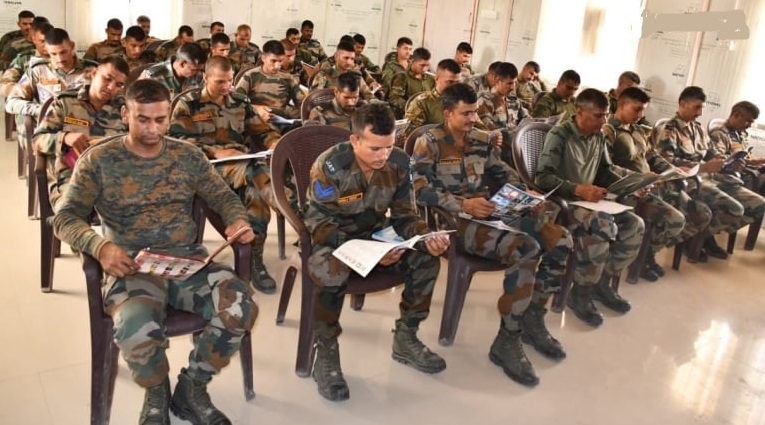 Agneepath Scheme replaced with Sainik Samman Scheme 2024, Defence Minister Rajnath Singh Relaunched Agniveer Scheme
Agneepath Scheme replaced with Sainik Samman Scheme 2024, Defence Minister Rajnath Singh Relaunched Agniveer Scheme
-
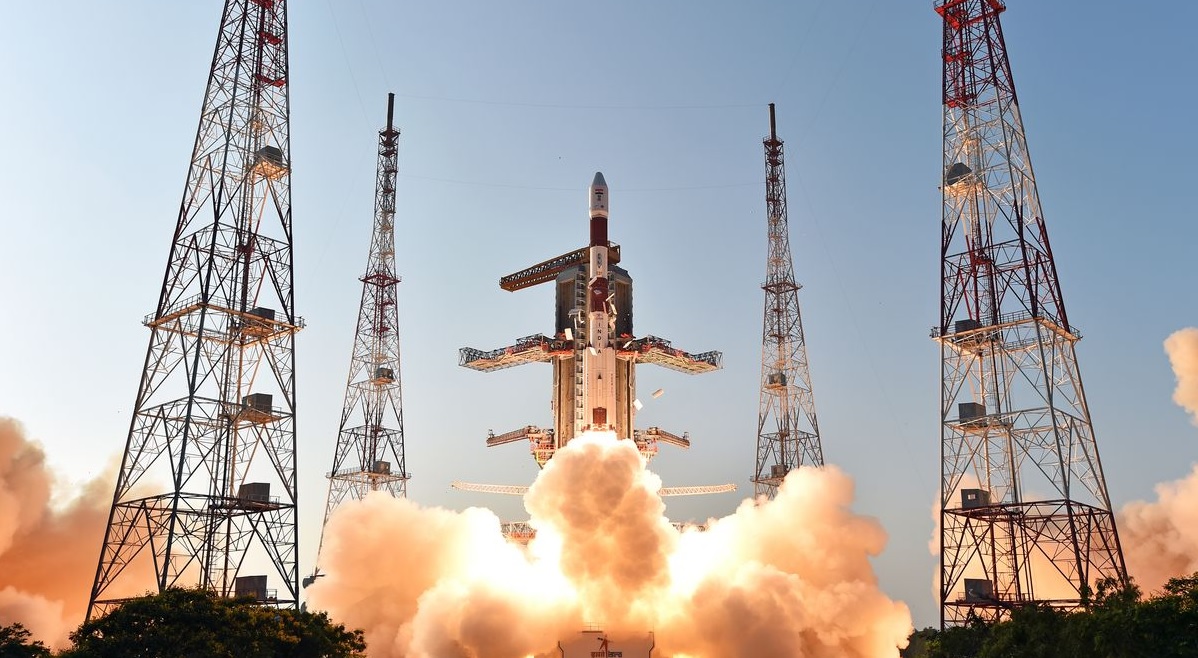 Isro Draws up Ambitious Plan for 2024, says will Launch at Least 12 Missions
Isro Draws up Ambitious Plan for 2024, says will Launch at Least 12 Missions
-
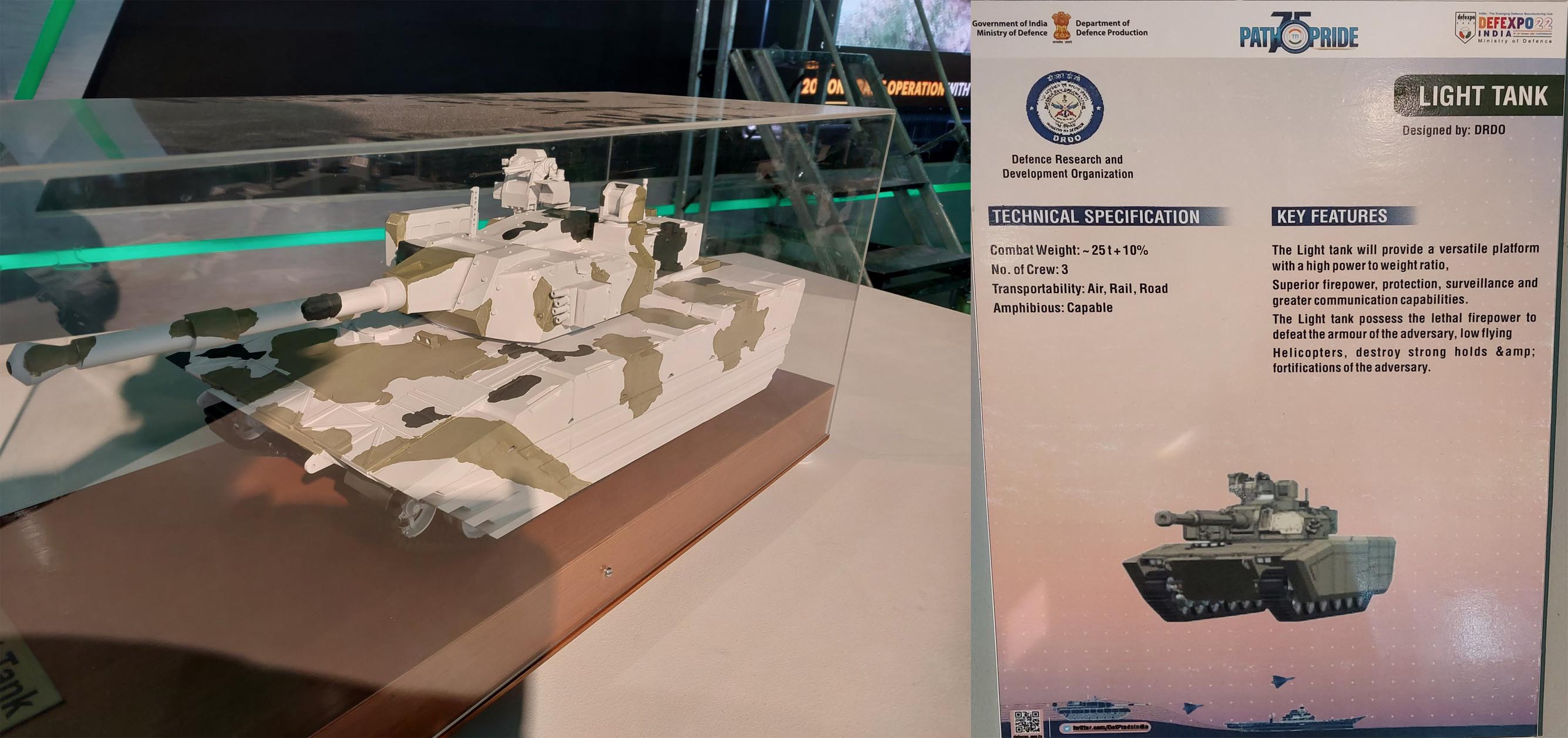 German Engines Available Now But India Chooses American Power Plants for Entire Zorawar Light Tank Project
German Engines Available Now But India Chooses American Power Plants for Entire Zorawar Light Tank Project
-
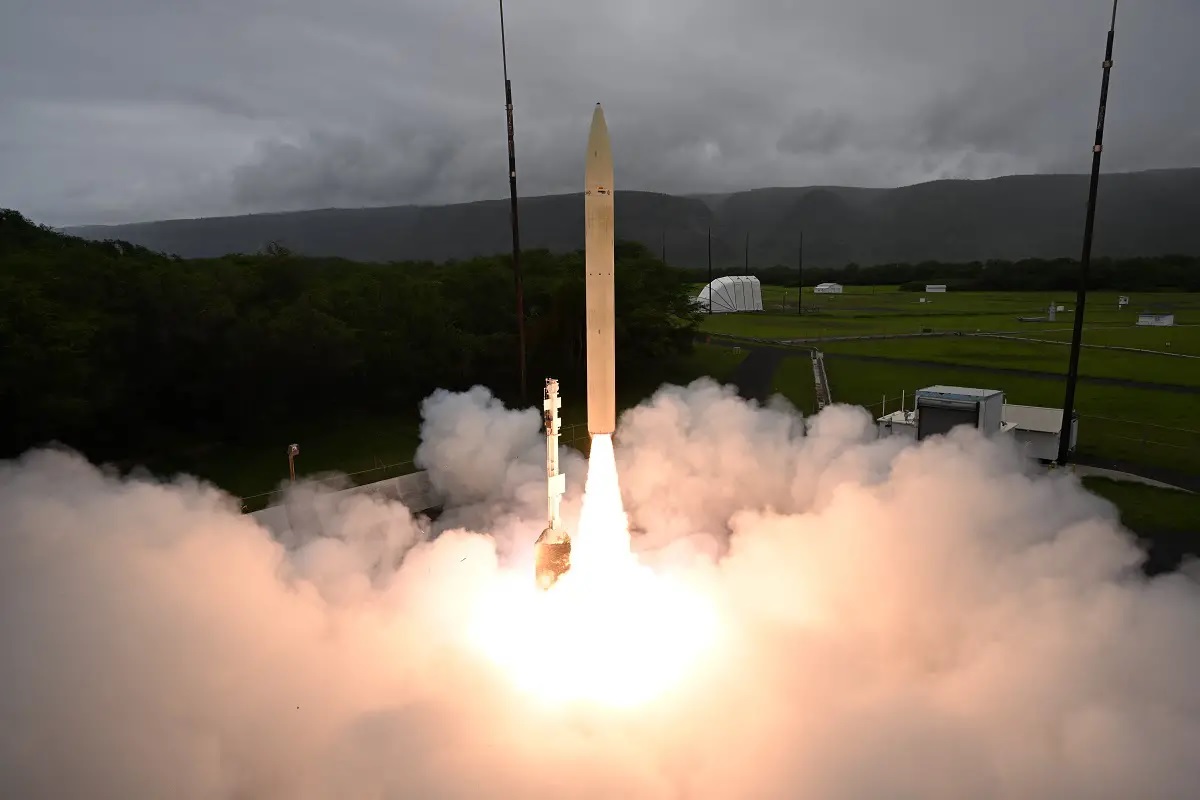 Successful Hypersonic Missile Test by U.S. Department of Defense
Successful Hypersonic Missile Test by U.S. Department of Defense
-
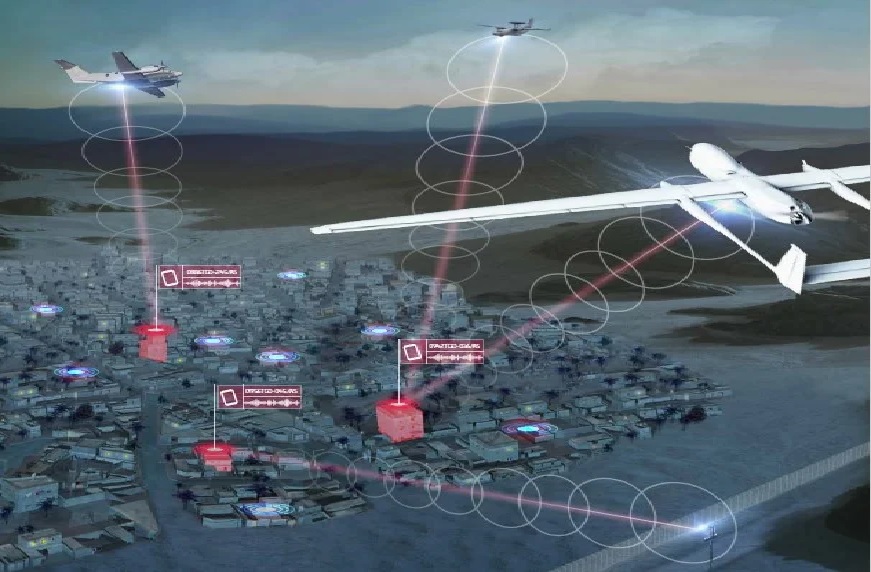 IAI's CellDart System Secures Contract for Airborne Cellular Intelligence Solution
IAI's CellDart System Secures Contract for Airborne Cellular Intelligence Solution
-
 India's Indigenous Kaveri Engine Program with New Focus on Thrust and Performance
India's Indigenous Kaveri Engine Program with New Focus on Thrust and Performance
-
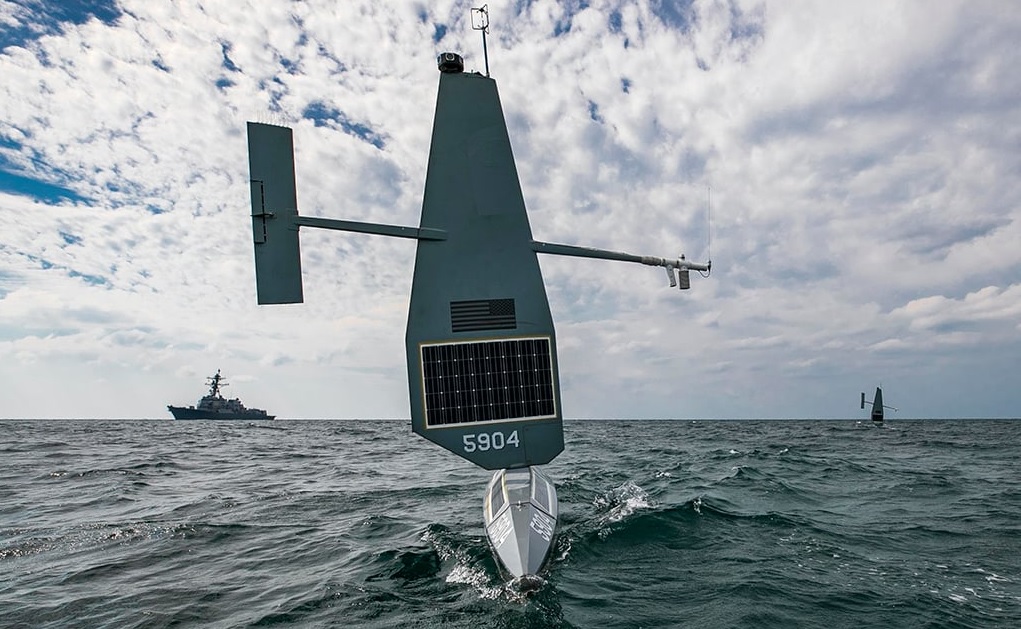 Unveiling the U.S. Navy's 'Hellscape': A Future Battlefield of Unmanned Systems
Unveiling the U.S. Navy's 'Hellscape': A Future Battlefield of Unmanned Systems
-
 Rolls-Royce Unveils a concept Nuclear Reactor that could one day Power a Colony on the Moon
Rolls-Royce Unveils a concept Nuclear Reactor that could one day Power a Colony on the Moon
Top Trending in 4 Days
-
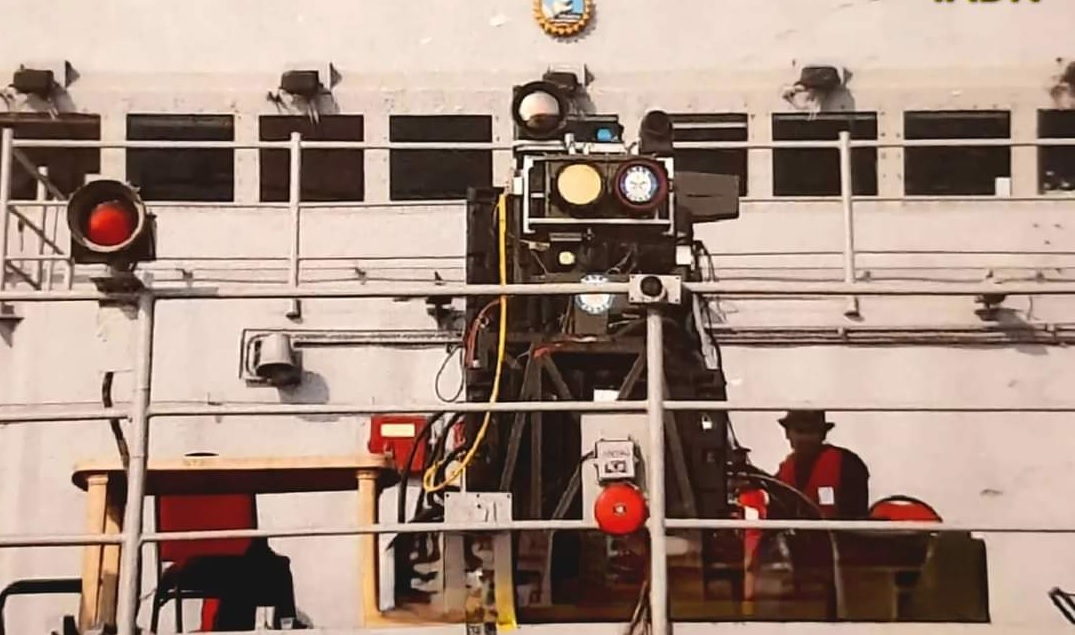 Indian Navy Tests 2 kW Directed Energy Weapon
Indian Navy Tests 2 kW Directed Energy Weapon
-
 India's Top Military Leadership Focuses on Creation of Joint Command and Control Centers to Strengthen National Security
India's Top Military Leadership Focuses on Creation of Joint Command and Control Centers to Strengthen National Security
-
 Ukraine Unveils Varta 2 Armored Vehicle with Advanced 30mm Turret
Ukraine Unveils Varta 2 Armored Vehicle with Advanced 30mm Turret
-
 GE Prepares to Deliver Two F-404 Engines this Month For India's Tejas Production
GE Prepares to Deliver Two F-404 Engines this Month For India's Tejas Production
-
 Germany Expands Military Aid to Ukraine with Order of 17 More IRIS-T Air Defense Systems
Germany Expands Military Aid to Ukraine with Order of 17 More IRIS-T Air Defense Systems
-
 Putin says Russia ready for talks with Ukraine, but there's a condition
Putin says Russia ready for talks with Ukraine, but there's a condition
-
 India and Brunei Strengthen Space Cooperation, Explore Long-Term LNG Supplies Amid Growing Ties
India and Brunei Strengthen Space Cooperation, Explore Long-Term LNG Supplies Amid Growing Ties
-
 China Targets Middle Eastern Defense Markets with Advanced OW5-A50 Laser Weapon System
China Targets Middle Eastern Defense Markets with Advanced OW5-A50 Laser Weapon System
